OCA MAGAZINE
BUILDING THE LANDBRIDGE WITH EURASIA
OPENING A NEW CHAPTER OF PARTNERSHIP AND UNDERSTANDING FOR KAZAKHSTAN INTERVIEW: HIS EXCELLENCY MAGZHAN ILYASSOV
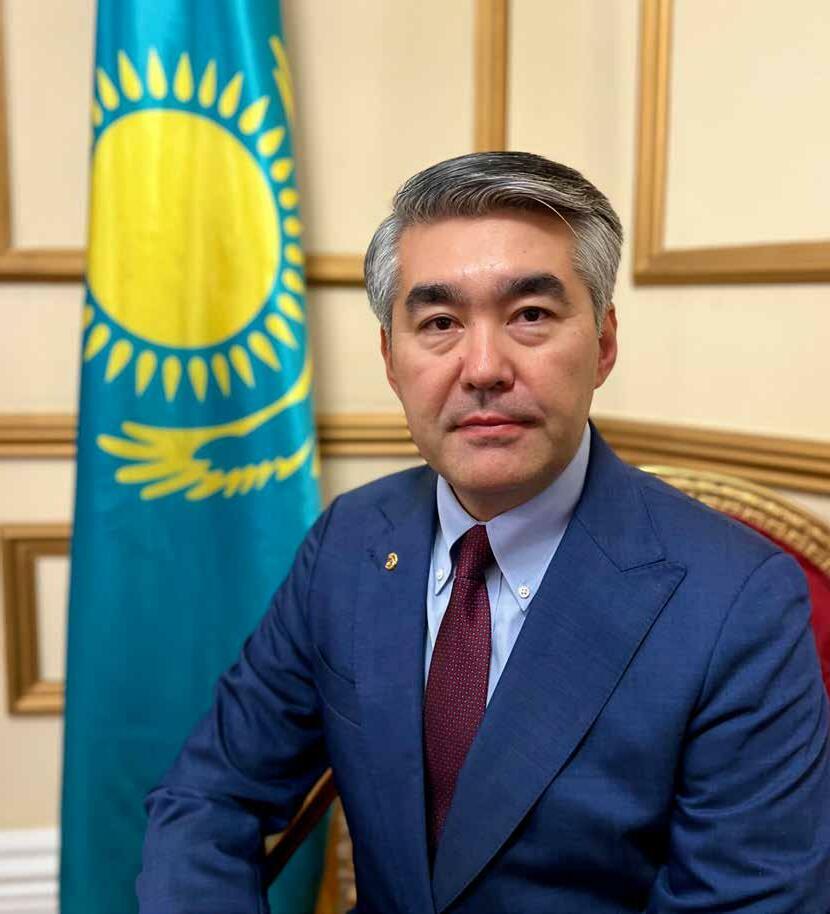
THE MYSTERY OF ‘TARTAR ISLAND’

SUPPORTING KAZAKHSTAN’S ‘GREEN TRANSFORMATION’
UZBEKISTAN’S NEW REGIONAL POLICIES AND REFORMS
RESULTS OF THE XI LITERARY FESTIVAL OEBF-2022

[ EURASIA ] ISSN 2053-1036 RRP: £20.00 / $25.00 WWW.OCAMAGAZINE.COM ESTABLISHED 2009


OPEN CENTRAL ASIA MAGAZINE #47 / 2023

Cover: His Excellency
Magzhan Ilyassov see p.6
MAGAZINE PUBLISHED FOR EURASIAN CREATIVE GUILD
EDITOR-IN-CHIEF NICK ROWAN
PUBLISHER MARAT AKHMEDJANOV
EDITOR’S ASSISTANT
ANNA NIKOLAEVA
DESIGN
ALEXANDRA REY
EDITORIAL TEAM
GARETH STAMP
RAZA SAYED
TAINA KAUNIS
DR. AL ARTAMAN (UAE & C. A)

CONTRIBUTORS
GARETH STAMP
JONATHAN CAMPION
NAZGUL ANARBEKOVA
TATYANA KONYAKHINA
VITALY KOLTOCHNIK
BRUCE GASTON
DAVID PEARCE
THOMAS HUNT
PAVEL KOSSOVICH
ECG BOARD
GARETH STAMP - CHAIRMAN
MARAT AKHMEDJANOV - VICE CHAIRMAN
ADVISORY BOARD
ELENA ASLANYAN, ARMENIA
ANATOLY LOBOV, GEORGIA
VICTORIA LEVIN, ISRAEL
ELENA BEZRUKOVA, KAZAKHSTAN
AZIM AKMATOV, KYRGYZSTAN
MARINA PODLESNAIA, MOLDOVA
JONATHAN CAMPION, UK
NATALIE BAYS, UK
LIUDMILA LARKINA, AUSTRALIA
BRUCE GASTON, CANADA
MARINA SHKROBOVA-VERNALIS, RUSSIA
LARA PRODAN, USA
ADAM SIEMIENCZYK, POLAND
MICHAEL KUNITSKIY, BELARUS
BAKHTYGUL MAKHANBETOVA, KAZAKHSTAN
MARGO GAMBURSKAYA, UZBEKISTAN
TAINA KAUNIS
BAKHTYGUL MAKHANBETOVA
YULDOSH JURABOEV
DISTRIBUTION
TIMUR AKHMEDJANOV
WEB
NAIMATT BUTT
Disclaimer :
CONTACT INFORMATION:
PUBLISHER@OCAMAGAZINE.COM

WWW.EURASIANCREATIVEGUILD.UK WWW.OCAMAGAZINE.COM

CONTACT NUMBER
(+44) 07411978 955 WHATSAPP & VIBER
EDITORIAL OFFICE
SILK ROAD MEDIA SUITE 125

43 BEDFORD STREET
COVENT GARDEN
LONDON
WC2E 9HA, UK
The information contained in this publication is for general information purposes only. The information is provided by OCA Magazine and while we endeavour to ensure the information up to date and correct, we make no representations or warranties of any kind, express or implied, about the completeness, accuracy, reliability or suitability of the information, products, services, or related graphics represented for any purpose. Any reliance you place on such information is therefore strictly at your own risk.
All authors provide their own material and any opinions contained within are solely those of the authors and do not neccessarily represent the views or opinions of OCA Magazine.We publish these views as part of our provision of a forum for discussion and readers should be aware that the views may contrast each other in the pursuit of this aim. In no event will we be liable for any loss or damage including without limitation, indirect or consequential loss or damage, or any loss or damage whatsoever arising from loss of data or profits arising out of, or in connection with, the use of material contained within this publication.
Special gratitude for cooperation and support to:


Embassy of Azerbaijan to the UK Embassy of Belarus to the UK Embassy of Kazakhstan to the UK Embassy of Kyrgyzstan to the UK Embassy of Russian Federation to the UK Embassy of Tajikistan to the UK Embassy of Turkmenistan to the UK Embassy of Uzbekistan to the UK CATBIG





OCA MAGAZINE 4
Happy New Year!
Black swan events are supposed to be unexpected, of large magnitude and consequence, and very rare. Perhaps once a decade or once a generation events even. But recent years have seemingly thrown up one black swan event after another that have impacted the world in far reaching and profound ways. The world is still dealing with the aftermath of the financial crisis, Covid-19 and the current impacts from the Russia-Ukraine war, including rampant inflation as well as the humanitarian impacts. 2023 promises no let up in potential for continued volatility and upheaval, with up to half of the world potentially entering a recessionary phase at the time when the globalized world we once knew is starting to close in on itself again. I was pleased to see the back of 2022, but “unprecedented” has become the new normal it seems. Governments no longer have a reliable playbook on which to make policy, needing innovation and action on the fly – which will lead to unexpected and potentially unpleasant outcomes. People no longer have the security and certainty that has been prevalent in many societies for decades. In short, what we know from the past bears little resemblance to our present and future.
Central Asia has been no exception. It has felt the impact of all these events. The violence in Kazakhstan in January 2022 seems an age ago today, yet uncertainty and the potential for violence and geopolitics to come to bear in the region, as internal pressures escalate, remain. The question that hangs over all of the Central Asian republics is how the situation in Ukraine will resolve itself and what that means for each republic in terms of its relationship with its neighbours, and
the world, in the future. How the republics ally themselves between each other is one thing, as well as how they handle the complicated relationships with Russia, China and the US/EU. Higher energy prices have increased revenues and benefitted the resource rich nations of Kazakhstan and Turkmenistan. So too have remittances remained stable for other countries as demand in Russia for migrant labour surges following a major demographic shift in the country as a result of the partial mobilisiation of its youth.
The problem for Central Asia, however, is that its economy is still heavily tied to Russia. If Russia’s economy implodes then the region’s economic resilience will be tested. The instability and insurgency that remains in Afghanistan, bordering the region to the south, will likely have repercussions while the insurgency threat remains high. China’s end of its Zero Covid Policy might open new economic opportunities, but it is not clear that the region is a priority for Beijing that has many other issues and priorities to face up to first.The upsides exist, but the downside risk looks to remain a bigger issue – 2023 looks to be as challenging, maybe more so, than 2022.
In this issue we cover a lot of ground in the region both economically, politically and culturally. I was personally delighted to have been able to interview both Kazakhstan’s new Ambassador to the UK, H.E. Magzhan Ilyassov and former Ambassador Daniel Speckhard who has just return from Ukraine to understand his view of life on the ground and what his charity has been doing to help those who need it most. I was also able to attend the Hertfordshire Press awards at the end of November and meet up with former colleagues and many old friends. And I am thrilled to read of the reports of the Open Eurasia Literary Festival that took place in Melbourne, Australia, on the other side of the world. Congratulations to all this year’s winners and participants.
Please do keep in touch and I look forward to seeing many more of you in person over the year.
Enjoy the issue!

WWW.OCAMAGAZINE.COM 5
THE
FROM
EDITOR
Open Central Asia Magazine
Nick Rowan Editor-in-Chief

OCA MAGAZINE 6
COVER STORY
OPENING A NEW CHAPTER OF PARTNERSHIP AND UNDERSTANDING FOR KAZAKHSTAN
INTERVIEW: HIS EXCELLENCY MAGZHAN ILYASSOV, AMBASSADOR TO THE UNITED KINGDOM OF GREAT BRITAIN AND NORTHERN IRELAND
Diplomatic relations between the Republic of Kazakhstan and the United Kingdom of Great Britain and Northern Ireland were established on 19 January 1992, with the Embassy opening in the UK in 1996. Thirty years on, relations continue to be as strong as ever. On 6 October 2022, Magzhan Ilyassov was appointed as the new Ambassador to the United Kingdom. His appointment, by President Tokayev, comes at a time when enhancing trade, economic and investment co-operation between the two countries could not be more important to both sides. OCA Magazine’s Editor-in-Chief, Nick Rowan, had the pleasure of discussing some of Ambassador Ilyassov’s priorities and experiences since arriving in the UK.
Ambassador Ilyassov has always known he wanted to be a diplomat. Born in Almaty, Kazakhstan, and having been schooled at one of the few Soviet and Kazakh universities that was intensively teaching the English language, a life of diplomacy was a natural path. Ilyassov worked his way up the diplomatic ladder, from the Ministry of Foreign Affairs, promoted to several departments within the presidential administration for 19 years, before being appointed as ambassador of Kazakhstan to the Netherlands in 2016. During his time there he was also the Permanent Representative of Kazakhstan to the Organisation for the Prohibition of Chemical Weapons, which involved much multilateral diplomacy on very challenging chemical weapons cases, including the Skripal poisoning in the UK. In 2020, Mr Ilyassov was promoted to New York as Kazakhstan’s Permanent Representative to the United Nations, before he arrived in the UK in October 2022.
I wanted to start by understanding what drove Ilyassov to a career in diplomacy. He starts without hesitation, “I saw that Kazakhstan in 1991, after the collapse of the Soviet Union, became a truly independent country. Before then all real foreign politics and diplomacy was controlled by Moscow.There was no real foreign policy
of the Republic of Kazakhstan whatsoever. I graduated from my high school in 1991, so attended the last school class of Soviet Union before it disintegrated. I saw this happening, and I said to myself, ‘Well, we have independence. We have sovereignty, we will exercise our own foreign policy.’”
Ilyassov’s arrival in the UK came during a year of huge global upheaval and uncertainty. It was a time where diplomacy was more important than ever. However, his arrival also came just a few weeks after the death of Her Majesty the Queen and that meant that he was one of the very first ambassadors to present their credentials to the new King Charles III. I was keen to hear more about his experience at Buckingham Palace.
Ilyassov’s eyes light up. “It was exciting, because not every day do you present credentials in a beautiful setting with its royal protocol. I was proud to wear national costume at the ceremony. We were properly briefed on what to do - how many steps to take, when to bow, and so on. When the doors opened, I saw His Majesty for the first time and proceeded with the presentation of my credentials. He was actually the least protocol driven person in the whole setting, because
WWW.OCAMAGAZINE.COM 7
COVER STORY
the ceremony itself revolves around the King. He was there very confident, very welcoming and very well briefed. His Majesty asked about my family and settling in London. We spoke about global challenges to the environment and the future of green energy. The King vividly remembered his visit to Kazakhstan all the way back in the nineties. I briefed His Majesty about several joint projects between Kazakhstan and the UK, including one that successfully helped to save the endangered steppe Saiga antelopes.”
Although King Charles is the head of state, he is typically briefed to be apolitical, but I wondered whether such topics were broached. “We generally touched upon politics,” Ilyassov comments. “In a very royal way he said that in these turbulent times, we need more understanding, more diplomacy to solve the things that are going on around the world. And that was his message.”
Ilyassov couldn’t resist officially inviting the new King to visit Kazakhstan again. “I said, ‘Your Majesty, the invitation is always open.’ He chuckled and said, ‘Well, we’ll see how it goes.’”
We move on to explore how Ilyassov sees his new role. It’s a nice bridge because he recalls how he put it to King Charles. “I told His Majesty that my mission here is also to make sure that people in UK remember that Kazakhstan is not just a former Soviet republic,” he recalls. “We had history before the Soviet Union. We had our own history and a statehood 500 years before that.”
Ilyassov’s mission is more than just reflecting on past glories, however. “Kazakhstan is a country of great opportunities,” he starts. “A country that is well on its track with political and economic development. We are the powerhouse of the region. Last year we celebrated the 30-year anniversary of our bilateral relations with the UK, which was one of the first countries to recognise Kazakhstan’s independence. For 30 years we’ve been building very robust political, trade, economic and cultural relations. We have very intensive contacts at the top political level. We have 600 British companies and joint ventures operating in our country, so my mis-
sion here is to build upon that platform. I also want the UK business community to know that there is much more than oil and gas in Kazakhstan: for example –mining, agriculture, transport, logistics, and education. My task is to upgrade already fruitful relations to the level of a truly strategic partnership.”
One of the topics of reform that is most live is that of political reform happening in Kazakhstan today with upcoming elections a key focus. Ilyassov is well briefed and clear. “The political reforms that President Tokayev started last year are very systematic and well structured. We are going step-by-step following the tragic events of January 2022, which triggered the need to reconsider and take appropriate measures both in internal politics and the economy. We had a national referendum on whether to amend our constitution. We had presidential elections and re-elected President Tokayev. There were six candidates running, with two women for the first time. Now the President has a full mandate for the next seven years. One of the amendments was that from now on any president can only be elected for one term of seven years. There is no second term, so no need to think about re-election and being populist. Then we had elections to the Senate recently, and now we are looking to the upcoming elections to the lower chamber, the Mäjilis, which will eventually complete the institutional transformations and redistribution of authorities and powers.” It is clear that Ilyassov believes this eventually will lead to a more responsible and responsive government.
The Ambassador is also keen to put the record straight on how current events in the region are on the radar of the country’s government. “We are very clear on the situation on Ukraine. We do not approve what’s going on. And our President was very clear that Kazakhstan will not recognise Lugansk and Donetsk. We are not Russophobes, we just do not approve of the war in Ukraine. Kazakhstan is an independent, constructive and objective country when building relations with partners around the world, be they our neighbours, like Russia and China, or further afield like the UK.”
I ask if current geopolitics make this a more urgent and new priority, but Mr Ilyassov immediately corrects me.
OCA MAGAZINE 8
“I don’t see it as new and urgent because Kazakhstan from the very beginning of its independence has exercised multivectoral diplomacy. Since 1991 we were very open and clear that we want to build good relations with everyone around the world.”


As the interview approaches its conclusion, I ask about his cultural mission in the UK and bringing Kazakhstan’s culture to new audiences. I press him to try and name the one thing we should know about Kazakhstan and his answer is refreshing. “We have a lot of cultural roots, and some fundamental values that we will always keep, but we are not an outback country somewhere in Central Asia where people live in tents and ride camels. People in the UK should understand that we’re very modern and have much more in common than we have differences. For example, I discovered a year ago, the whole new world of modern Kazakh Indie pop. We have many young singers; they all sing in Kazakh language and the tunes are very modern. This shows where we are after 30 years of independence. So, we will continue focusing on that and, hopefully with the
help of the Eurasian Creative Guild, we can organize some great events to help the UK audience to discover some new music waves from Kazakhstan.”
I agree wholeheartedly with this refreshing approach and leave the ambassador the last word. “I think we are really writing a new chapter,” he says with optimism. “A lot has been done, but there is more to do. My counterpart in Astana, British Ambassador Katie Leach, is very proactive. We are working together very closely. I hope that the work we’re doing will eventually sink into the local political and cultural circles so that by the time I’m done, people will stop calling Kazakhstan, just a former Soviet republic.”
Nick Rowan Editor-in-Chief at Open Central Asia Magazine
WWW.OCAMAGAZINE.COM 9
His Excellency MAGZHAN ILYASSOV, Ambassador To The UK & NI
UZBEKISTAN’S NEW REGIONAL POLICIES AND REFORMS
Uzbekistan’s economy is going from strength to strength. The European Bank for Reconstruction and Development (EBRD) expects the country’s GDP to show 6.5% growth in 2023 – higher than the 4.9% forecast for the overall Central Asia region. One of the key actors that will support this growth is a new focus by president Shavkat Mirziyoyev’s government on developing trade and other business relations with its neighbouring countries – and also with other states in the wider Eurasia region.

At Mr Mirziyoyev’s annual address to parliament in 2022, the president noted: “We will continue to pay a priority attention to the strengthening of multifaceted, mutually beneficial partnership with all our neighboring countries in Central Asia, our Strategic Partner Countries and international organizations.”
New opportunities in Central Asia
Businesses in Uzbekistan have been cooperating more with the neighbouring republics since the start of Mr Mirziyoyev’s
presidency in 2016. In the last five years the volume of Uzbekistan’s trade with the other four Central Asian states has more than doubled. But it is only in the last year, as incoming investment from Russia and China has fallen away, that this has been spoken of publicly as a distinct policy.
In his address at a round-table of ambassadors and representatives of international companies in December 2022 – an event at the resort town of Archazor named “The New Uzbekistan: a reliable partner in a changing and interconnected world” – the Uzbek minister of foreign affairs commented: “In recent years we have managed to bring relations with all the states of the region to a high strategic level, through our joint efforts to form an entirely new, positive atmosphere of mutual trust and cooperation. Uzbekistan and brotherly neighbouring countries have embarked on joint industrial co-operation projects, the creation of effective value-added chains, and the development of transport and energy infrastructure.” The minister added: “[The policy] is based on adherence to the principles of international law and an
OCA MAGAZINE 10 POLICY
aspiration to peace, good-neighbourliness, comprehensive cooperation and the strengthening of regional stability and international security, all of which are in Uzbekistan’s national interests.”
The projects that the minister alluded to include several ventures with the region’s largest economy, Kazakhstan. In December 2022 the countries signed a further 40 bilateral agreements worth $2.5 billion at an Uzbek-Kazakh business forum in Tashkent. One contract for $80 million centres on the two countries’ joint work to repair the Angren-Pap-Kokand-Andijan-Savay railway section, a key trade route in the region. Uzbek and Kazakh companies are also working together to implement artificial intelligence software in the Uzbek healthcare sector, as well as more traditional business, including trade in aluminium and food products.
In Kyrgyzstan, meanwhile, Uzbekistan’s Temir Yollari JSC has opened a joint project office for the two countries to coordinate the construction of the China-Kyrgyzstan-Uzbekistan (CKU) railway. This project was conceived in the 1990s, but had made very little progress due to the historically strained relations between Tashkent and Bishkek. The CKU has been resurrected in recent months, as Uzbekistan and Kyrgyzstan have found common ground, both governments realising the practical need for greater cooperation between the Central Asian states. In total, bilateral trade between Uzbekistan and Kyrgyzstan reached $1 billion for the first time in 2022, thanks also to projects in the industrial, energy, electrical engineering, agriculture, transport and other sectors.
Mr Mirziyovev’s government has also considered the issues of further deepening Uzbek-Turkmen relations of strategic partnership, enhancing cooperation in economy, trade, industrial cooperation, energy, transport and logistics, activation of interregional contacts, cultural and humanitarian exchange. Since the beginning of the year, the volume of mutual trade between Uzbekistan and Tajikistan has grown by 16%. The joint cooperation projects are being implemented in various sectors of the economy, including light and electrical industries, agriculture and water management, transport and others.
Afghanistan, which for many years played the role of a buffer, a watershed in the global confrontation between global powers and regional centers of power, is now trying on a new consolidating mission, bringing the positions of different players closer together on the basis of common trade, economic, transport and communication interests.
The path to peace in Afghanistan: the contribution of Uzbekistan.
Uzbekistan’s policy of ensuring peace and stability in the region has not abandoned Afghanistan. President Shavkat Mirziyoyev said: “It is important to prevent isolation of Afghanistan and its transformation into a ‘rogue country’. Uzbekistan is a leader in regional efforts to provide humanitarian assistance to Afghanistan. The Termez Regional Humanitarian Logistics Centre, located two kilometers from the border, plays a huge role in supporting UN emergency operations in Afghanistan. The Afghan Citizens Education Centre, established in 2017 by the Government of Uzbekistan, provides a wide range of higher and vocational education and training for Afghans living in Termez, including girls. Uzbekistan has completed a project to rehabilitate the Mazar-e-Sharif International Airport in Afghanistan. Uzbekistan is the main supplier of electricity to Afghanistan - 2.7 billion kWh. (52% of the electricity imported by Afghanistan).
New strategic ties with Europe.
The Uzbek government is also looking to strengthen partnerships with countries further afield. In 2022 Samarkand hosted the first conference between Central Asia and the European Union, entitled “EU-Central Asia Connectivity: Global Gateway for Sustainable Development”. At the conference Uzbekistan, again represented by foreign minister Norov, expressed a hope that ties between Central Asia and the EU would continue to develop, with the transport and green energy sectors mentioned as possible fields for cooperation. In keeping with the conference’s theme of connectivity, it was announced that the European delegation had proposed a new project to improve digital connectivity in Central Asia.
As promising as the short-term picture may look for Uzbekistan’s regional policies, there are still some significant barriers to be overcome for these new initiatives to be sustained. High rates of inflation within the country may limit Uzbek companies’ ability to invest in foreign projects, while the biggest projects in the region still depend upon cooperation from China and Russia to succeed. But nonetheless, in Central Asia today, Uzbekistan is unrecognisable from the indifferent and difficult neighbour that it used to be known as.
by Jonathan Campion
WWW.OCAMAGAZINE.COM 11
SUPPORTING KAZAKHSTAN’S ‘GREEN TRANSFORMATION’
Ms Kathy Leach started her role as Her Majesty’s Ambassador to the Republic of Kazakhstan in August 2021. Previously she was Deputy Director, Constitution and Devolution, Europe Directorate in the FCDO. From 2012 to 2015 Kathy served as Ambassador to the Republic of Armenia. Kathy is married and has 3 children. She speaks Russian and French, has learnt Japanese and Armenian, and is currently learning Kazakh. OCA Magazine finds out more…

OCA: Please tell us a bit about your background and how you came to be Ambassador to Kazakhstan.
Cathy Leach: I became fascinated by the history of Russia and the Soviet Union while I was at school, with a brilliant history teacher called Mr Sherman. I applied to Cambridge University to study Russian and French. A month after going to Cambridge in the autumn of 1989, the Berlin Wall came down – it felt like a whole range of new, exciting possibilities were opening up. For my third year I wanted to spend the whole year really improving my language. I arrived in the Soviet Union in September 1991, a month after the attempted coup, to study and live with a Russian family – a few months later, the Soviet Union no longer existed, and I saw the beginning of the extraordinary, unexpected journey to create 15 independent countries. In 2001 I passed the entrance exams to join the Foreign Office. Since then my career has taken me to Moscow, Tokyo, Yerevan and now Astana – working on lots of different areas from energy and climate change to human rights, from security policy through to trade relations with the EU. This posting
OCA MAGAZINE 12
FOCUS
Her Excellency CATHY LEACH Ambassador to Kazakhstan
INTERVIEW: HER EXCELLENCY CATHY LEACH, AMBASSADOR TO KAZAKHSTAN
as Ambassador in Kazakhstan feels like it draws on all the experience I’ve had – and it has happened at a really important moment, as Kazakhstan seeks to work out a new path, a new political and economic approach, 30 years after independence.

OCA: Prior to this posting you were Ambassador to Armenia, which shares a similar Soviet history. What did you learn there that you can apply in Kazakhstan?
CL: There is of course something familiar about the post-Soviet world – the buildings and the bureaucracy are similar! But I think overall the really important lesson is that actually every country in this region is very different, shaped by its unique history and its unique culture. You just need to find a way to get past the bureaucracy to connect with those people who really want to make a difference. And you need to keep generating ideas and contacts so that when an opportunity arises, you are in a good place to seize it and make the most of it.
OCA: You also spent time in Moscow with the Foreign Office. Given the current political climate how will that affect your work with building UK bridges in Kazakhstan, a close neighbour to Russia?
CL: Of course it helps my understanding and my effectiveness at work to know Russian and to understand the history and politics of the region. For Kazakhstan, it’s important that I understand the many personal, cultural, economic, historical and political ties there are with Russia, and how we can work together to try to avoid harm to Kazakhstan during the incredibly difficult geopolitical challenge created by Russia’s invasion of Ukraine. Kazakhstan’s prosperity, security, independence and sovereignty have always been important to the UK, and this is even more important today.
OCA: What are your priorities for building UK/ Kazakh relations and economic ties?
CL: Since British companies were founding stakeholders in Kazakhstan’s flagship international oil and gas projects, for many years this sector was the most important one for our Embassy. But after our COP26 Presidency, our goals have become more ‘green’. My big priority now is – together with partners – to support Kazakhstan’s ‘green transformation’: modernising, diversifying and greening its economy. On the commercial side, this means focusing on clean tech and green energy, critical minerals and climate-adaptive agriculture. It also means focusing on education – promoting better English teaching, and more Higher Education links. Together, these are really important economic components supporting the ‘New Kazakhstan’ President Tokayev has outlined.
WWW.OCAMAGAZINE.COM 13
FOCUS
OCA: How have you settled into Kazakh life and what are your particular favourite Kazakh pastimes and cultural aspects?
CL: I’m enjoying living in Astana, but I think I need to travel more to really understand Kazakh pastimes and culture! That is my ambition for the coming year. There was a brilliant exhibition at the Fitzwilliam Museum in Cambridge last year, celebrating the amazing finds from the burial mounds of East Kazakhstan – and the National Museum in Astana is my favourite building – so I am really keen to explore Kazakhstan’s extraordinary archaeological history.
OCA: What can the embassy do to help build closer cultural ties to Kazakhstan?



CL: To celebrate Burn’s Night (the birthday of celebrated Scottish poet Robert Burns) this year, we have been running a competition to translate ‘Ode to a Haggis’ into Kazakh. This has stimulated so much interest! So, I think we should definitely do more to share English and Kazakh literature.
OCA: Where have you travelled within the country and where have you found particularly resonates with you?
CL: I love Almaty – such a beautiful, interesting, walkable city. I feel very at ease there. My children and I also had a wonderful few days last summer seeing the lakes and mountains in Almaty region. I found it incredible how the scenery could change from the Arizona-like gorge of Charyn Canyon to the Switzerland-like lush green hills around Kolsai and Kaindy Lakes, just an hour or two apart. Driving up to the high summer pastures was a truly unforgettable experience.
OCA MAGAZINE 14
SPECIAL EDITION OCA CINEMA 2023





The team of OCA magazine is happy to announce a new special edition OCA Cinema 2023! A special issue of OCA Magazine will be published in London in October 2023. It is planned to publish articles on cinematography and the whole film industry in Central Asia, as well as expert articles from leading experts, including British ones, in the magazine. The special issue OCA Cinema will be of interest to producers, filmmakers, actors etc. all over the world. You are welcome to contribute to the issue!

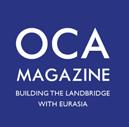


KAZAKHSTAN: REFLECTIONS AFTER THE ELECTIONS

The elections in Kazakhstan have concluded and outside even the weather has warmed a little and the sun has melted some of the frozen pavements. The warmth is a slight respite before the real winter, but people are making the most of it. Wrapped and cocooned in layers, smiles and bright eyes peek from coat hoods. The frozen breath of laughter can be heard from children sledding on the hard packed snow in the playgrounds between the apartment blocks.
The televisual excitement of the previous few days has melted away too and life is back to normal. There is background chatter on social media from the usual active people with a mixture of ill-informed analysis and gossip. Misinformation abounds with the lists of candidates and the percentages of their votes appearing alongside memes and video clips of the people casting their votes. Some people openly show who they voted for, others show their children being lifted to be able
OCA MAGAZINE 16 VIEW
to post the paper into the ballot box. All who voted seem keen to prove they voted and broadcast it. According to official figures 69% turned up to vote across the country.
Of the fifteen regions in this vast country, the highest voter turnout is in the Zhetisu Region, 81%, while the lowest is in the city of Almaty, with just 29% percent. Almaty, a former capital and major business and financial centre, had low turnout at the 2019 presidential election as well.
In Astana, the country’s capital and centre for the Akmola region, where the majority of the world’s press have been based, the turnout is reported to be 79%. Many people, however, when asked said they had not voted. One of those who said they did vote, an older woman who was out carrying her grandchild, said she had voted because ‘it is important for this generation!” waving the cradled child like a doll. Other young people asked “What’s the point ?” but would not reveal what they really meant. A group of young women keen to practise their English were happy to talk - two of them had voted but the other two had not. Aigerim, one of the women who had voted, said “It’s not just a right but a responsibility to make sure your voice is heard”. When one of her friends asked who she had voted for she was less forthcoming. But they all agreed that it had been good to see female candidates and they believed that at the next election a woman would win! “We need stability at this time,’’ said Gaughar, the other of the women who had voted.

This attitude about ‘the next time’ became a common theme in conversation. One of the candidates posted that she was pleased to have been part of the process and that, although she had not won, she was being encouraged to continue in politics and stand again - apparently by senior figures in the current administration. But that opportunity will be seven years away and the world may be
a very different place by then. It is back to normal, but the challenges that lie ahead in this region need to be met by the new administration.
You might be wondering who won this election. The current president with 81% of the vote.
“It is right he is back in Akorda (the presidential palace) so that he can solve the current problems and lead us forward for the next few years,” Gaughar added as they shuffled off chatting and filling the frozen air with their voices.
There is a real sense of optimism that Kazakhstan has a bright future, in many people’s eyes an important future on the world stage too and, although the expected change voiced by many before the election did not materialise, maybe Gauhar is right stability is what is needed now. We will see what happens ‘next time’!
by Gareth Stamp Chairman of the Eurasian Creative Guild (London)
WWW.OCAMAGAZINE.COM 17
FROM THE FRONT LINE: THE UKRAINE CONFLICT INTERVIEW WITH DANIEL SPECKHARD, CEO CORUS GROUP

The Former Soviet Union has occupied Ambassador Daniel Speckhard’s professional career (and personal interest) since the 1990s. He initially served as director of policy and resources for the Deputy Secretary of State, overseeing and co-ordinating foreign aid funding. Following the breakup of the Soviet Union he was Deputy to the Ambassador-at-Large for the new independent states including Russia and Ukraine, and responsible for a range of political and economic issues. Becoming Ambassador to Belarus from 1997 gave him direct insight into the aftermath of independence, after which he was appointed in 2000 as NATO’s deputy assistant general for political affairs, covering not only the Soviet Union but also Eastern Europe (including Ukraine) and the Balkans. He is currently the CEO of Corus International, which was launched in 2020 as a parent organisation of several NGOs addressing global health and development issues. Following a recent visit to Ukraine, Open Central Asia ’s Editor-in-Chief, Nick Rowan, finds out more.
The horrific headlines emerging from Ukraine never seem to abate. As I dial into my call with Ambassador Speckhard, news has filtered through of further Russian attacks on Ukrainian infrastructure, destroying perhaps as much as 50% of the electrical power infrastructure. This threatens to plunge millions of weary Ukrainians into chilling darkness as winter approaches. If ever there was a time to pray for a warm winter, it is now.
I ask Ambassador Speckhard what his assessment of life on the ground is like, having returned recently from a trip to Ukraine’s front lines. “It’s hard for people to understand,” he starts cautiously. “They see the war pictures. All the rocket attacks and the destruction. It’s easy to feel empathy, but I don’t think people really understand the scale. There’s roughly 15 million people needing humanitarian assistance. According to the UN, 7 million people have left the country and 7 million are displaced inside. Many people forget the demographics. The reality is Ukraine is a very ageing population. When I got to Kharkiv, about 40 miles from the front, the shelters were filled with people in their 70s and 80s. Many don’t have families to go to. Many have chronic illnesses, in need of medicines.”
OCA MAGAZINE 18 OPINION
DANIEL SPECKHARD, CEO CORUS GROUP
It is not just the physical illnesses. Speckhard continues, “The other thing I noticed is the psychological trauma. You assume that it’s there, but you don’t realise how significant it is. Many of the [elderly residents] moved to basements and stayed there for weeks, sometimes months, as they rode out the war. You can’t talk to these displaced people without them quickly falling into tears.”
Russia’s continued bombardment of crucial infrastructure such as power stations and lines, leaves a humanitarian crisis unfolding before our eyes. Many will feel overwhelmed and powerless to help, but Speckhard’s current venture, the Corus Group, aims to help ameliorate conditions for as many people as possible by giving them a place that is warm, as safe as possible and with access to proper healthcare.


“We’re creating a new NGO that we hope will be a model for the future,” he enthuses. “It is based on how you bring together specialised agencies and groups to create a technically sophisticated NGO that can take a more holistic approach to development, poverty, health and humanitarian challenges. We are trying to build capacity and knowhow with a holistic response, because what we find is that foreign aid is very stove piped. For example, money marked for health-related activities is only for health, rural development only for rural projects, environment for environment, and so on. But actually, if you go to a village, these people don’t just have one issue. If you fix the health problem but nobody has jobs, the people are still going to suffer.”
It’s a very valid point and one worth considering deeply as the world looks to rebuild Ukraine once hostilities have ended. Speckhard continues,“We’ve now got roughly five different groups working together on health, livelihoods, and humanitarian assistance. We then impact invest in companies with a direct trade group that brings products straight
WWW.OCAMAGAZINE.COM 19
OPINION
into us to try to reduce intermediaries and increase value back to the producers.”
“My goal is to keep knocking on enough doors so that the international community will start taking another look and see it’s really wrong to spend billions of dollars only on health. It should be allowed to be used on anything that can improve health outcomes.”
I shift back to Ukraine and the immense unity in both the Ukrainian morale in their existential fight, as well as that of the international community. This unity was hugely underestimated by observers, how come?
“What’s interesting to see is the more the Russians attack, the stronger the response by the Ukrainians is in terms of digging in their heels and not being willing to surrender. That has to do with a couple of things. Firstly, they believe their military is ultimately going carry the day. They’re throwing everything they have at it - they’re fighting to protect and save their home country.. Secondly, they have seen some progress on the battlefield that gives them a lot of extra hope, allowing them to come together as a community. That was amazing to me, just to see how everybody’s suffering, often worse than you could imagine, brought people together in the shelters, sharing what they had, openly supporting each other. Their social conscience understands resilience.”
So, what is Corus doing in the short and medium term to help? “We are focusing on the immediate needs in shelter, food and health, as well as trying to work with the ministries, ensuring that there’s good co-ordination across all the international actors. And here is the secret: trying to work within local structures and build capacity in the local systems. We’ve partnered with the Federal Trade Union, which touches the entire country and has enormous influence with different actors at the
local, regional and national level. We’re using their infrastructure as a place for people to go for shelter as opposed to gymnasiums or school cafeterias. People have a little more space and dignity if they move there. Second, we’re focusing on the food, so making sure you get everybody at least one meal a day and then health, because many people have serious chronic sickness, as well as psychological trauma.”
I’m interested to understand how Speckhard’s time as a former ambassador and working in NATO has influenced the way he thinks. “The part that I worry about as a former diplomat, is the externalisation of this war. I was on an interview the other day with a member of Russia’s parliament who kept saying that this is essentially the US fighting a war against Russia. That language is really dangerous, because if Russia wanted to see a war between the United States and Russia, it would look a lot different. And nobody should want that, least of all Russia. So, we need to avoid this kind of externalisation. Clearly the US and European nations are providing military support, but it’s not US soldiers or European soldiers on these front lines.”
How does he see the war progressing? “What you see happening, is Russia looking to Iran and North Korea for more weapons. This is what to watch for in the coming months - how does Ukraine, and their supporters, try to build more symmetry into what’s happening. It can’t last forever that you can just lob rockets from a safe zone at no cost to Russia.We tried economic sanctions, but that’s not enough. My expectation is that people are going to be working very hard in Kyiv to ensure that there has to be a cost to Russia.”
In terms of how strong and sustained the West’s support has been, Speckhard is clear. “The reality is less about what the West does and more about what Russia does. Its brutal behaviour is what re-
OCA MAGAZINE 20
ally keeps that solidarity. If Russia were at all pursuing a different kind of approach, like trying to propose truces and ceasefires, and maybe even having some unilateral ones for a day or two, they might change some of the perceptions of the allies that are supporting Ukraine. They have shown no desire or willingness to do that.”
So, what kind of future can we expect for Ukraine? “I think the country will stay fractured in terms of politics. I don’t think you’re going to see a pro-Russian government in Kyiv anytime in the rest of my lifetime..”
I ask briefly how Belarus’ role might play out given Speckhard’s former role as the US Ambassador to the country. “Lukashenko is walking a tightrope,” he starts. “He needs to be able to show Moscow that he is a complete ally of Russia, because otherwise he risks a similar fate as Ukraine. At the same time the Belarusian people have no interest in getting involved in this war. Belarusians have always hated war. It’s a country across which armies have marched through for the last few centuries. They have a saying there that says, ‘At least we have bread and salt.’ As long as you have bread and salt, you know you’re doing all right. So, they keep their heads down. I think Lukashenko knows that this would be a losing proposition for him with the Belarusian people. I think the Russians hopefully know as well that opening up a front along that 1,100 kilometre border is a bad idea.”

Before our hour’s call is up, and having covered so much ground, I finally ask Speckhard what he thinks Central Asia, and other former Soviet Union countries, make of the current situation and how they balance the geopolitical scales. Speckhard is hesitant at first but provides a few pearls of wisdom. “I think everybody has had their eyes opened as to the weakness of Russian conventional forces, however they have seen that there’s no weakness in terms of ability to punish civilian populations.
So, these countries will be watching that side and know the brutality in terms of how Russia is willing to use artillery rockets, and other means, to destroy civilian centres and infrastructure. What I would expect them to do is be very respectful, but at the same time be working overtime to build new relationships. I would expect that wouldn’t include the United States. That’s too provocative, but certainly with Turkey, China, Middle East and Saudi Arabia.”
Nick Rowan Editor-in-Chief at Open Central Asia Magazine

WWW.OCAMAGAZINE.COM 21
TELECOMMUNICATION NETWORKS AS AN INTEGRAL LINK OF THE DIGITAL ECONOMY IN THE KYRGYZ REPUBLIC

The concept of digital economy is an activity directly related to the development of digital computer technologies, which includes services for the provision of online services, the most important of which are: Internet banking, Internet commerce, Internet marketing, Internet games, crowd funding, etc.
There are two approaches to the term digital economy. The first approach is classic: “the digital economy is an economy based on digital technologies, and at the same time it is more correct to characterise exclusively the field of electronic goods and services.” Classic examples are telemedicine, distance learning, the sale of media content (movies, TV, books, etc.). The second approach is an extended one: “the digital economy is an
economic production using digital technologies.” Some philosophically interpret this term broadly: “the digital economy is a virtual environment that complements our reality”. The key factor of digital transformation in the activities of market entities is the development of digital culture.
Industrial companies have adopted a digital economy development strategy to strengthen their positions in the market: in 2000 - Denmark, in 2005 - Singapore, in 2008 - Australia, Hong Kong, Great Britain, New Zealand, in 2009 - the European Union as a whole, in 2010, Canada 2012, in Malaysia, in 2013 - South Korea, in 2015 - India.
OCA MAGAZINE 22 ECONOMY
Modern information and communication technologies are significantly changing all social relations, and we note with confidence that new technologies not only change how products and services are produced, but also create new opportunities for the realisation of civil rights, self-realisation of the individual, gaining knowledge, teaching a new generation and spending leisure time. The measures of the State Policy of the Kyrgyz Republic are aimed at stimulating the development of the telecommunications and IT sectors, improving legislation and technical regulation. These are necessary elements for the successful development of digital infrastructure.
It should be noted, that domestic representatives of this market have been able to establish themselves as highly qualified specialists in this field. In particular, the IT company “Qoovee” represented Kyrgyzstan at the 5th Moscow International Forum “Open Innovations”, which was held on October 26-28, 2016 at the Skolkovo Technopark. In addition, Kyrgyz IT specialists are known as good performers in the global off shore programming market.
So, in June 2012, the head of the Board of Directors of Google, E. Schmidt, and the executive director of the analytical centre Google Ideas, J. Cohen, visited Kyrgyzstan. The purpose of their visit was to assess the potential of the ideas of Kyrgyz IT specialists and get acquainted with the Internet services market in Kyrgyzstan. After that, Google opened a division for Central Asia. Since then the President of the Kyrgyz Republic signed a decree declaring 2019 the Year of Regional Development and Digitalisation of the Country”.
The Kyrgyz Republic has achieved some success in digitising the electoral system, integration and interaction of state institutions through a single Tunduk system, some services of state institutions have been digitised and are available through a single electronic service portal to which there is access via Internet networks.
The success of the Kyrgyz Republic in the digital transformation of the economy is largely due to the joint movement of the EAEU countries towards the digital economy. Analysis by the World Bank showed “that the introduction of a common digital agenda significantly increases the growth of the EAEU’s GDP, and digital dividends will be $42.3 billion due to the removal of
legal barriers, $1.6 billion due to the digitalisation of public procurement, $1.3 billion due to public services of open government, 0.5 billion dollars — at the expense of cross-border electronic state services.”
For the further development of digital technologies, both external and internal barriers are relevant. There is a group of internal barriers of a financial nature: insufficient budgets, high cost of projects, high costs of operating systems. External barriers are no less relevant, primarily related to the instability of the economic situation in the country, the insufficient level of development of ICT infrastructure, as well as due to the unwillingness of suppliers and consumers to use digital technologies.
Thus, the full-scale use of the achievements of digital technologies runs through all the components of the Strategy 2040 and the national priorities of socio-economic development of the Kyrgyz Republic. Kyrgyzstan will actively pursue reforms to create a competitive digital economy through the formation of really attractive conditions for entrepreneurs, the use of innovative and nature-saving technologies. The widespread introduction of information technologies in production and management should become a priority of the development policy. In accordance with section V of the Strategy 2040 “Priority directions of development of the Kyrgyz Republic until 2023”, digital technologies should be introduced as a priority in such areas as education, healthcare, tourism, agriculture, telecommunications, banking, light industry and construction.
WWW.OCAMAGAZINE.COM 23
Anarbekova Nazgul Anarbekovna
SILK ROAD

THE TURKIC WORLD: A CONCEPT OF CO-OPERATION BETWEEN CENTRAL ASIAN COUNTRIES

What is the modern concept of co-operation between the Central Asian countries and why is the Turkic world, according to many scientists, a promising concept of such co-operation? We try to understand this issue in this article. Considering historical retrospect, we note that the territory of modern Central Asia, in the XIX century, was in the sphere of interests of the Russian tsar, who established a protectorate over this territory to protect his southern borders. Later becoming part of the USSR, the territory of Central Asia was divided into five Soviet republics: Uzbek SSR, Kazakh SSR, Tajik SSR, Turkmen SSR, Kyrgyz SSR.
The advantages of living in the USSR included the large-scale construction of schools, hospitals, factories, irrigation facilities, and infrastructure facilities that are still functioning today, industrialization and literacy. There were also plenty of disadvantages: together with other Soviet republics, the Central Asian republics experienced the “charms” of collectivisation, repression, authoritarian rule, and most importantly, forced Russification: in all republics, the official language was Russian, which caused a natural discontent of the indigenous nationalities of these republics. For example, a young man from the Uzbek hinterland, where the Russian language was not predominant and was not taught well enough at school, experienced difficulties in studying at a university and further building a career due to insufficient knowledge of the Russian language.
The collapse of the Soviet Empire radically changed the life of the countries of the region. Currently, the Central Asian countries have a fairly high economic and demographic potential, as well as a convenient geographical location for the transit of goods from Europe to Asia and back. The attractiveness of the region for many leading world powers has led to rivalry between them for influence on the countries of Central Asia. Thus, the EU and the US are seeking to strengthen their influence, while Turkey, Iran, India, and China are seeking to strengthen their positions in the east. Russia also does not want to lose influence in Central Asia, considering this region to be a historically established sphere of its interests. Russia needs to maintain its influence in the region in order to realise its political and economic interests, in particular with the development of energy resources and maintaining a monopoly on them, using this factor as a lever of pressure on both the leaders of the Central Asian countries and their Western partners.
China, like Russia, is aggressively promoting the idea of a multipolar world, preparing itself for the role of one of its centres. The countries of the region are also in the orbit of Chinese interests, due to the need for the Chinese economy to have access to energy resources and oil and gas reserves.
SILK ROAD
Despite the multi-vector policy of the Central Asian countries and their desire to maintain relations with Russia and China, there is an obvious trend towards co-operation of these Turkic countries.
The integration of the citizens of the Republic of Turkey with the countries of Central Asia was brilliantly foreseen by Mustafa Kemal Ataturk, who wrote: “Today, the Soviet Union is our friend, our neighbour, our ally. We need this friendship. But no one can predict what will happen tomorrow. The world can achieve a new balance. We have brothers with one language, one faith and one core.We must be ready to integrate with them. To be ready is not just to be silent and wait for this day. How are the nations preparing for this? Keeping the spiritual bridges intact. Language is a bridge... Faith is a bridge... history is a bridge… We have to go down to our roots and join our history, divided by events.” That is, more than a hundred years ago, Ataturk predicted the integration of the Turkic countries based on the values of the Turkic world. The collapse of the USSR and the formation of independent states with a predominantly Turkic population, from the position of the Turkish leadership, provided a unique chance for the Turkish Republic to expand its zone of influence.
The Turkic world, as a special historical reality, was formed in the Middle Ages. The ancient thinkers of the East (Abu Nasr al-Farabi, Muhammad ibn Musa alKhorezmi, Abu Rayhan al-Biruni) laid the philosophical, ideological, moral foundation of the concept of the Turkic world. The values of the Turkic world include freedom and independence, morality, justice, responsibility and tolerance.
The Turkic world is being strengthened in regional and international politics thanks to the active policy of the Turkic Council, which is an inter-governmental international organisation established for comprehensive co-operation of the Turkic-speaking states. The Turkic Council includes Turkey, Uzbekistan, Azerbaijan, Kazakhstan and Kyrgyzstan.
An example of co-operation between countries within the framework of the Turkic Council is their interaction during the coronavirus pandemic, when member countries and observer countries agreed to create a “green corridor” to facilitate the crossing of borders by people and essential goods, medicines and medical equipment.
In 2021, the Turkic Council was transformed into the Organisation of Turkic States. Co-operation between the countries of the Turkic world has a huge potential, since 300 million people speaking Turkic languages live on the planet.
The co-operation of the countries within the framework of the “Turkic World” concept is aimed at achieving the following goals:
- convergence of economic policy and all relevant regulatory frameworks;
- achieving full trade integration;
- creation of a single investment space;
- digital integration;
- Improvement of transport and energy links between the countries of Central Asia.
The countries of the Turkic world are striving to create a single transport space, which is necessary to increase trade turnover between them. Turkey has started transporting its goods to Central Asia, developing trans-Caspian routes and deepening co-operation with the Caspian countries. In December 2020, a new export route from Turkey to China was opened, passing through Georgia, Azerbaijan, and Kazakhstan.
Co-operation between the countries of the Turkic world is promising and long-term. The program “Vision of the Turkic World-2040” developed by representatives of the Organisation of Turkic States of the countries is the basis for co-operation and considers a set of measures to be implemented in the period up to 2040.
Thus, it can be concluded that co-operation between the Central Asian countries and the Republic of Turkey is based on spiritual, cultural and linguistic community, on the common values of the “Turkic World”.
The growth of foreign trade of the Turkic-speaking countries is due to the involvement of Turkish business in the implementation of important industrial and infrastructure projects. Trade with Turkey is also beneficial for the Central Asian countries, as Turkey is a growing market.
OCA MAGAZINE 26
Tatyana Konyakhina Higher education in Finance. Freelancer.

SOCIETY ROTARY FOUNTAINS IN THE HEART OF EURASIA
Our attention was attracted by a wonderful project in the city of Almaty - the southern capital of Kazakhstan. Almaty is a crossroads of civilizations, one of the important and longest points of the Great Silk Road and a key centre of charity in the pre-Soviet and post-Soviet periods of its history.

The First Rotary Club in Kazakhstan: History
It is not a coincidence that exactly here, among the first Rotary Clubs in the post-Soviet area, the Rotary Club of Almaty RCA appeared back in 1995. RCA has had a series of remarkable projects – including mass support and diagnostics campaign for children with epilepsy - for the Public Fund «Ken Jurek», com-
plete re-equipment and modernisation of the special kindergarten#2, providing hospitals of the city with new ambulances and equipment, giving incubators for premature babies to maternity departments and perinatal centers of Almaty.
In cultural life, RCA has always been a conductor of refined social events - Viennese balls, creative evenings with participation of international celebrities, performers, singers and has acted as a partner of cultural days to key partners of Kazakhstan in the cultural arena - Italy, USA, France, Great Britain, and Turkey.

OCA MAGAZINE 28
28th Anniversary of the Club

And to honour its 28th anniversary, the RCA will carry out a very noble and deserving project to place Rotary drinking fountains in the city of Almaty with futuristic designs, anti-freeze functions, drinking bowls for animals and inclusive facilities for disabled people. Twenty-seven will be erected, according to the number of years of the Club’s existence. The crown of the grandiose plan will be the Main Architectural Fountain of Almaty - Arman-Bulak (Dreams source) - whose prototype is the Trevi Fountain in Rome. The Roman example was chosen completely consciously: there are more than 3500 drinking fountains in the Italian capital. Visitors and residents do

not even need to buy water, such is the density of fountains per square meter.

The Origins of the Idea

Almaty is the largest and most populous city in Kazakhstan and the centre of tourist flows with a very hot climate and a constantly growing territory. Due to climatic features the megalopolis seriously lags behind many regions in the provision of drinking fountains. In addition, clean water, sanitation and hygiene education are essential for a healthy environment and productive life.

WWW.OCAMAGAZINE.COM 29
SOCIETY
Drinking fountains are a whole new level of comfort for citizens and guests of the city, a driver of tourism development, returning comfort to the city - historically, Almaty has always been the most “fountainised” city in the Asian sector of the former USSR. However, in recent years, the trend has been pushed aside by more pressing issues of infrastructure development and undeservedly forgotten.
Fountains: From Planning to Implementation
The RCA’s bold vision is now becoming a reality. The club, represented by Altynay Beissembiyeva (President 2022-2023) and her team took a course on integration of efforts with local authorities alongside the Mayor’s office (akimat), its head Mr Erbolat Dossayev and the Department of Public Health of Almaty. An MoU was signed stating that projects would be jointly run together with local authorities.
Erbolat Dossayev (Mayor of Almaty), Altynay Beissembiyeva (president RCA), Nataliya Drobysheva & Vitaliy Koltochnik (members of Board RCA)
Thus, this year 2 incubators will be handed to two perinatal and neonatal centres in Almaty. The Fountain Project will be the first joint collaboration with the Governor’s effective office managers and many others are to come in future.
The Faces of the Project
Amir Kabulov, Fountains Project leader, is a dedicated Rotarian, architect and designer. He is a graduate of Politechnico de Milano in the field of HoReCa public space design, known for his creative solutions in the world capitals of culture - London, Paris, Cannes and Milan.
The architect of the project is Ricardo Andrea Marini. Ricardo is the author of the reconstruction of Panfilov Street, one of the oldest in the historical center of Almaty, and many landmark projects in the capital of Kazakhstan, Astana. Previously he worked in the team of the famous Danish architect Jan Geil in Kazakhstan.
Ricardo Marini is a big fan of drinking fountains as an element of urban aesthetics and comfortable urban environment. His hobby is to photograph drinking fountains around the world and place them in virtual exhibitions. After hearing about the Almaty Rotary Club’s project, he immediately fell in love with its idea and decided to take part in it as a designer.
Gulmira Baigabulova, is owner of Urban Living, Member of the Public Council of the City of Almaty.
Famous Italian expert on architecture and urban planning, director of playmaking at Urban Living (flagship of the architectural business in Kazakstan) under the guidance of the famous urbanist and public figure of Almaty, Gulmira Baigabulova, partner and co-executor of the project.
Cultural Renaissance - as a new paradigm of Rotary Club of Almaty
The first fountain dates back to 3000 B.C; it was a goddess holding a basin. Water was sourced from a local spring. Early fountains used gravity instead of mechanical pumps to move the water. As we moved to live in urban settlements the way we gathered potable water needed to change. The ancient Etruscans, Romans and Greeks started to develop drinking fountains as part of public infrastructure.
The reality of providing water fountains in a city such as Almaty is to ensure that during all season’s water will be available. The provision of water fountains is an essential component of a ‘city for people’, it also is a great way to reduce single use plastic, that is so problematic in modern cities. There is also a cultural, spiritual, mystical and religious significance of drinkable water “offering to the water gods” meaning that today the phenomenon of throwing coins in a fountain still exists as an offering to these ideas. In Rome throwing one coin means you will go back to Rome, 2 coins means you will meet a Roman, and 3 means you will marry one! The Trevi fountain is one of the most famous fountains in the world. The city gathers approximately 3000 euros a day from fountains alone!
OCA MAGAZINE 30
Almaty fountains get a special meaning in the context of the events that shook the world in January 2022. The January events left a deep mark on the perception of Kazakhstan and its southern capital. The city experienced enormous damage to the security, beauty, architectural look and economy of the city.
The Rotary Club of Almaty set a goal to return Almaty to its former comfort and sense of safety and harmony, to support the development of the native city in the spirit of sustainable development goals and the revival of the rich cultural and historical heritage of the southern capital. Almaty Fountains solves the problem of access to drinking water, combines the tasks of climate control, access to drinking water,
zoo protection and social inclusion. It symbolises the permanent process of purification and renewal. It is an impetus for the development of tourism and the local economy.

WWW.OCAMAGAZINE.COM 31
Vitaly Koltochnik Club secretary and chairman of the PR committee of the Rotary Club of Almaty
THE MYSTERY OF ‘TARTAR ISLAND’

As a teenager, I grew up in New Brunswick, Canada. In New Brunswick, the local Indian tribe are the Micmac. The Micmac were known for eating ‘fiddleheads’, the signature food of New Brunswick. Later in life, I learnt that many believe that Micmac to be possibly the most sophisticated of the North American Indian tribes, with a written language and rich history of interaction with many cultures.
Today, I have been lucky enough to be doing business and living in Kazakhstan and Central Asia for 20 years. Importantly for this story, I have a traditional Kazakh coat and hat, given to me as a present by Kazakh friends. I remember them asking me about my nationality after I told them about some of the discoveries, I had made researching the region’s ancient past. I told them that their ancient past is far more connected to the rest of the world than conventional history admits.
Several years ago, I read two books by an author called Gavin Menzies called ‘1421’ and ‘1434’, which are about several giant Chinese fleets with giant ships that sailed much of the world, it seems. In fact, there were at least seven Chinese fleets sailing into the early 15th century. The books appear to be gaining some acceptance, though they remain controversial.
At the same time, I reviewed ‘The Island of the Seven Cities’ by Paul Chiasson, which discusses archaeological evidence that the Chinese settled in what is now called Cape Breton Island in the North of Nova Scotia in Eastern Canada. Cape Breton sits just outside the estuary to the St. Laurence river, opposite the island of Newfoundland. Chiasson discovered what he believes are the archaeological remains of 7 Chinese cities and a harbour on Cape Breton Island. Like 1421 and 1434, The ‘Island of the Seven Cities’ was immediately controversial.
OCA MAGAZINE 32 HISTORY
These books intrigued me, as I have my own theory that the Bretons of the west coast of France, previously called the Armoricans, were actively trading with ‘Indian’ tribes on the east coast of North America long before Columbus arrived in 1492. I believe that America is named after French Armorica. There is a locally known legend on the islands of the Breton Iles des Brehat that Columbus visited these islands asking for advice before sailing to America. Traders and fishermen on the Iles des Brehat were known historically to trade and fish with America,
Chiasson’s book,The ‘Island of the Seven Cities’ inspired me to further research the Cape Breton Micmacs. It’s interesting that the island is called ‘Cape Breton’ given the link to Armorica/Brittany in France.


When finding pictures of typical Cape Breton Micmac men’s coats, I was amazed. It was strikingly similar, if not identical, to traditional Kazakh coats. Many of the sailors on the Chinese fleets of 1421 and 1434 were tartars; probably many from what is now Kazakhstan. An intriguing coincidence! If indeed Chiasson’s book
was true, and the Chinese fleets established a colony of seven cities on what is now Cape Breton, then very likely those who settled were originally Central Asian Tartars. It was highly likely that the Cape Breton Micmac coat has the very same origin as my Kazakh traditional coat!
For many years now, I have been collecting ancient maps of Central Asia, but since discovering the Kazakh link with Cape Breton in Canada, I have been intrigued with ancient maps of the Americas too. While on a trip to Guatemala, I discovered a copy of an ancient map of North America, showing the location of the legendary lost Viking city of ‘Norumbega’. On this same map, Cape Breton was named “Tartar Island’. Another intriguing coincidence. The mysterious ancient Tartar past of Cape Breton, ‘Tartar Island’, was becoming more interesting with each new discovery.
Recent Newfoundland archaeological discoveries provide credence to other Viking Tartar origins in America, such as ‘Nurumbega’. After the discovery of the ancient Chinese archaeological sites on Cape Breton and its link to the huge Chinese fleets of the 15th Cen-
WWW.OCAMAGAZINE.COM 33
tury, there have been several discoveries about origins of the now extinct ‘Indian’ tribe of Newfoundland, the ‘Beothuk’. Academic evidence suggests the disappearance of the Seventh Chinese fleet and the disappearance of the Viking settlements of Greenland may be connected through the ‘Beuthuk’ people. Possibly, both the disappearance of the original Chinese Tartar presence North-Eastern America and the Greenland Viking communities’ disappearance may have occurred for similar reasons. In both cases, their motherland naval supply routes were cut-off. This was due to the black death in Scandinavia and an early 1400’s mini-ice age in the case of Greenland’s Vikings. The Tartar Chinese colonies were cut off due to the Chinese Peking mandarins banning further Chinese exploration fleets. Both Viking and Chinese Tartar colonies collapsed.


Recent studies of the indigenous ‘Beothuck’ people of Newfoundland have concluded they had Chinese Norse origins. For example, the ‘Beothuk’ had signs on poles identical to those of China around the same time. Various stories and legends about the ‘Beothuck’ peoples ancestral background led to formal genetic analysis revealing mtDNA evidence of Chinese, Norse, and even Celtic origin. Linguistic evidence suggests some Celtic Norse ancestry. Evidence suggests the Newfoundland’s
original Indian population was killed off completely by various plagues between 1402 and 1404, leaving the ‘Beothuck’ ancestors to find an empty Newfoundland after 1404. Coincidentally, Vatican records suggest that the last of the Greenland Viking community left in giant ‘heathen’ ships in the early 1400’s.
Amongst oral legends of Newfoundland’s ‘Beothuck’ people were stories told of giant ships lying sunk near shore. Even in the 1890’s, a massive ship could be seen in a local harbour, with masts still protruding from the surface. After intensive searching in 2017, further similar ships were located. Evidence now clearly indicates Tartar Chinese Norse origins of the ‘Beothuck’ people and the likelihood that Greenland’s Vikings were rescued by Chinese ships and brought to Newfoundland.
Is it possible that occupation around the world led to a sudden expansion of Tartar culture, only to be suddenly cut off when China banned further fleets after 1433? At a minimum, academic and genetic evidence now shows that Chinese Tartar Viking communities existed in Newfoundland and probably Cape Breton Island; the ‘Tartar’ Island of Seven Cities. Could it be that this Chinese Tartar Viking culture expanded further into New England’s legendary land of ‘Nurumbega’, only to disappear once the naval link to China was cut? Is my traditional Kazakh coat truly the origin of Cape Breton’s Micmac coats?
by Bruce Gaston
OCA MAGAZINE 34 HISTORY

DISCOVERING KARAKALPAKSTAN

With a land area of 165,700 km² and a population of just under 2 million, Karakalpakstan situated in the far northwest of Uzbekistan accounts for about one third of the latter’s territory, but barely 5 percent of its population. Mainly desert, it encompasses a large part of the Ustyurt plateau to the northwest; the Kyzyl-Kum desert to the east; and the growing Karakum desert to the north, once the bed of the receding Aral Sea.The region’s fertile area comprises the Amu Darya river delta homeland of the ancient civilization of Khorezm, which today is shared by three jurisdictions in two countries:
the autonomous republic of Karakalpakstan and the oblast or province of Khorezm in Uzbekistan; and the oblast or province of Daşoguz (formerly known as Dashkhovuz) in Turkmenistan. Karakalpakstan’s capital was initially Turtkul, close to the Amu Darya river, but upon becoming an autonomous republic in the 1930s, Nukusuntil then a downstream garrison town became the capital.
Karakalpaks, which means “black hats,” belong to the kipchak linguistic sub-group of Turkic peoples, close to
OCA MAGAZINE 36
DESTINATION
Kazaks and Kyrgyz. Originally cattle breeding nomads and gypsies from the Volga region, they appeared on the lower reaches of the Syr Darya river towards the end of the 17th century, east of present-day Karakalpakstan. Later, they migrated westwards, crossing the lower reaches of the Syr Darya and Amu Darya rivers, occupying the desert fringes of Khorezm.
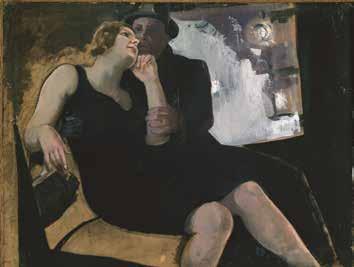
For hundreds of years, the once heavily populated Amu Darya delta achieved considerable power and prosperity under ancient Khorezm, based on extensive irriga-

tion-based agriculture. However, from the second half of the 20th century onwards, gradual climate change and the ongoing desiccation of the Aral Sea, owing to the unsustainable agriculture practices of the Soviet period, destroyed Karakalpakstan’s fisheries industry. This also resulted in a harsher climate, a shorter growing season, and other environmental degradation and public health problems.Thus, the economy, once heavily dependent on fisheries, is mainly agricultural, supported by cotton, rice, and fruits, such as apricots, grapes, plums, pears and, especially, melons, with cattle and

WWW.OCAMAGAZINE.COM 37
DESTINATION
iting, even swimming in, what remains of the southern Aral Sea should arrange a 2-3 day organised trip from Nukus, camping at a spot overlooking the sea or staying in the yurt camp of Bes Qala Tours.
To visit the archaeological remains of Khorezm’s ancient civilization is best arranged by driving either from Urgench to Nukus or vice versa. About 100 miles, this journey can be organised to include visits to: several kalas, or forts, en route (i.e. the remnants of Khorezm’s ancient civilisation), a traditional meal served in a Karakalpak yurt, and a manageable climb and panoramic view from the famous Chilpik Dhakma, a 2,000-yearold Zoroastrian Tower of Silence, a 45-minute drive south of Nukus.
Karakul sheep raised in the Kyzlkum desert. Industry, though limited, includes light manufacturing, refineries that process oil from nearby petroleum fields, and several building-materials plants that exploit the gypsum, limestone, marble, and quartzite of the area.

Against this background, there are three main reasons to add to the conventional Uzbekistan tourist itinerary (Tashkent, Samarkand, Bukhara, and Khiva) a visit to Nukus and Karakalpakstan: to view the environmental disaster that is the Aral Sea, to visit the archaeological remains of Khorezm’s ancient civilization, and to admire the Savitsky Collection of Karakalpak folk art and of early 20th century Russian and Central Asian avant-garde art at the Karakalpakstan State Museum of Art named after I.V. Savitsky
To view the environmental disaster that is the Aral Sea involves a 2-3 hour drive from Nukus to Muynaq, which 50 years ago was a thriving fishing port on the southern shore of the world’s fourth-largest inland sea. Now, it is a ghost town where skeleton ships lie broken in the desert. Adventurous travellers interested in vis-
Finally, to admire the Savitsky Collection of Karakalpak folk art and of early 20th century Russian and Central Asian avant-garde art you need at least a half, preferably a full, day visit to the Karakalpakstan State Museum of Art named after I.V. Savitsky in downtown Nukus. This unique museum, the Louvre of Uzbekistan, holds the second largest collection of Russian avant garde paintings after the Russian Museum in St. Petersburg. In addition, the museum also contains a gallery of Karakalpak Folk Art including traditional embroidery, jewellery, printed and stitched leather, and carved and inlaid wood.

In summary, Karakalpakstan has a unique and rich cultural heritage. It includes ancient architectural and archaeological monuments, folklore, performing arts, ceremonies, and customs, as well as traditional handicrafts. Even a one-day visit, comprising an early morning 90-minute flight from Tashkent and a late evening return flight from Nukus, is sufficient for a visit to Nukus town and specifically the Savitsky Museum.
David Pearce Retired from the World Bank, David Pearce lived and worked in Kazakhstan and Uzbekistan for seven years between 1994-2003. He was also Chairman, Friends of Nukus Museum from 2007-19.
OCA MAGAZINE 38
ART CATALOGUE
“THE GREAT STEPPE TREASURY”
The art catalogue “The Great Steppe Treasury” is a special project of the Eurasian Creative Guild (London) and the prestigious British publishing house Hertfordshire Press (UK), designed specifically for visual artists.
Today, when the world is focused mainly on visual content, the visual arts are coming to the fore. However, the modern artist has to live in conditions of fierce competition. And this is where the opportunity to show your work in one of the three world capitals of art – London, New York or Los Angeles – becomes a huge advantage.
Therefore, we are happy to give members of the Eurasian Creative Guild (London) not only a unique opportunity to publish their paintings in an art catalogue that will be published in London, but also to distribute the published catalogue to 10 leading art galleries in London!

The special feature of the catalogue is that a variety of works could be published: paintings in traditional techniques, as well as digital paintings, illustrations, collages, artistic photography, etc.

The first presentation of the art catalogue “The Great Steppe Treasury” is planned for the celebration of “Navruz” in March 2023 in London.
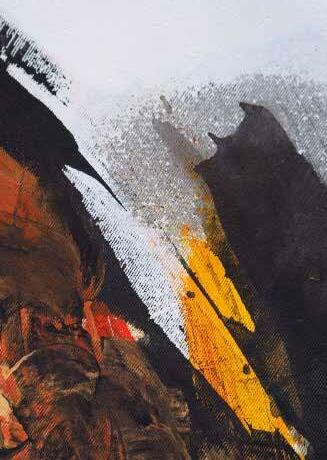
HERTFORDSHIRE PRESS
DISCOVERING TASHKENT - UZBEKISTAN TRAVEL
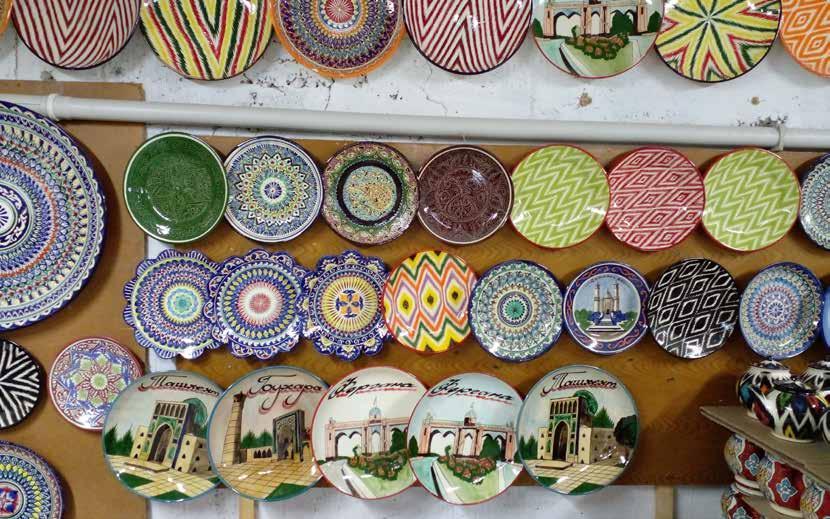
The border region between Uzbekistan and Kyrgyzstan, which endured a border conflict a few weeks earlier, was alarmingly found less than 60 miles south of Kokand and 35 miles south-west of Rishtan- the home of ceramics in the country- where I’d just been. Fortunately, on the western side of the Tien Shan range, lies the Pskem Mountains, which separate the two countries and acts as a natural barrier. Nevertheless, it was all too close for comfort. From the buzzing industrial town of Kokand in the south, the final leg of my journey would take me north to the capital, Tashkent where I would spend my final days in the country.
It was widely known among locals that one of two cheapest ways to reach the capital was to go by train, so I took on the adventure. I hopped out of the taxi which had drawn up to the train station, heaved my heavy backpack onto my shoulders and went through the security procedures. In much of Europe, no security measures are put in place for passengers entering a train station but it makes more than enough sense. The train station was small and basic but it fulfilled its job for holding waiting passengers.
Finally, just as dusk arrived, a battered, old green train came rolling into the station. On board, the conditions were absolutely fine, much like that of European trains with comfortable seats, opening windows and, all importantly, an emergency exit. To my relief the trip was going to be safe.However, I had placed myself in the wrong seat and therefore I was suddenly hoisted from my perfectly comfortable position with my backpack and escorted through four carriages, with a series of knacked doors at each end, to the back of the train where I was hastily shoved into a four-seated tabled room alongside an Uzbek woman and a young, loving Russian couple sitting opposite. There, I tried to settle into the dull, four-hour journey. I didn’t feel as content here as back in the economy carriage - it was hot and stuffy and I felt awkward about where to look with two strangers facing me.
A tired-looking TV was illuminated above each pair of seats, showing a mix of romantic Uzbek music videos and dramatic comedies but unfortunately the volume was muted. At least moving pictures was better than staring at a blank wall I thought to myself. Darkness
OCA MAGAZINE 40 TOURISM
quickly descended so it was almost impossible to see any of the towns, villages and nature along the way which you would have inevitably seen had it been light.
Finally, the bright city lights of Tashkent appeared through the window and we knew it was only a matter of time before we arrived. The train carefully pulled into the North-serving train station and a taxi driver quickly swept me up and took me to the Old Inn Hostel. The hostel room was small and cramped with ten men sleeping in one small room. Belongings were scattered on the floor and on a wooden table but for the two-night stay it would be fine. Mid-morning the next day, I went to explore Tashkent with an intention to go swimming. I followed the routes of four swimming pools in the city on my phone but none of them were in operation - one was still under construction, another was closed, a third was locked up and the fourth was non-existent. Despite these setbacks, I could still discover some of this great city. Long, wide streets with flashy, modern clothes and beauty shops and restaurants were occasionally intersected by giant mosques.
My next target was to try to find a tennis club. I found myself among several crowds of Friday prayer worshippers walking to their mosques and swarms of young students pouring out of two universities, some in smarter wear than others, all enjoying the mild, sunny

weather, which was blessing this Friday lunchtime. The city was busy with two lines of traffic, mostly made up of white cars to protect themselves from the summer heat, flowing in both directions. I finally arrived at a pretty park near the centre of the city. Everything looked perfect - the river flowed under a bridge and a small Islamic minaret could be seen perched on a small hill in the centre and the odd person was minding their own business. From there, I walked until eventually I stumbled upon a small grocery market and shopping centre in what felt like more of a tight-knit neighbourhood of Tashkent. The area was packed full of different types of stores selling things marked by a big bronze statue of a local hero imposingly keeping an eye on everyone.
After an hour of sitting on a bench passing the time, I called a taxi in my quest to find the tennis facilities. We swiftly arrived at the entrance to the National Tennis Centre of Uzbekistan, a large, grand complex consisting of a huge dome in the middle full of indoor tennis courts and around six immaculately laid hard courts. It is where top ATP player Denis Istomin, who has competed in numerous Grand Slam events, trained for several years and still trains now.
Yet I would have to go to another place because these were too expensive. Not far was the Republic Olympic
WWW.OCAMAGAZINE.COM 41
Reserve consisting of a swimming pool, athletics track and tennis courts, which once was destined to produce sports champions in the future but fell into disrepair. It was decorated with the five colourful Olympic rings logo over its entrance.The four hard courts there were fine and the generous taxi driver’s bargaining with the court fee allowed me to play with a friendly local youngster. After the match, it was dark and the long walk back to the hostel took me along two long very busy roads. Youths gathered in groups and giggled and chatted loudly in the streets outside the endless convenience stores which lined the streets while the traffic roared past into the Saturday night darkness.
My final day in Tashkent took me to the downtown area for some last-minute sightseeing. A couple of Russians who had escaped the army mobilisation by Putin forcing them to join the war in Ukraine were staying at the same hostel. They invited me to go on a wander so we took a busy metro from our district straight into the heart of the city. The weather here was once again mild and sunny, gently shining through the trees and creating a dappled effect as we slowly walked along the street but it was incredibly quiet, as though the population was yet to rise from its slumber. We strolled past a number of important-looking government buildings and some magnificent mosques and statues which have adorned the city for decades. We rather abruptly arrived into a busy Sunday morning market, full of a hive of activity and traders shouting out to get their next customer.

The waft of barbecuing shashlik, a type of shish kebab, pleasantly filled our nostrils and there were countless numbers of stalls selling cucumbers, peppers, broccoli, carrots, carriages and different types of fruit as well as freshly baked lepyoshki, a common soft, round bread native to Central Asia. We eventually stumbled on a bustling food court selling all types of typical Uzbek food. It was more of a quick eat-and-go place rather than a restaurant sit down but the food was cheap. We enjoyed a traditional meat and vegetable soup and delicious plov, a type of fried rice with horsemeat, carrots and onions all mixed together. I thought to myself it was a perfect way to end off a fascinating yet exhausting adventure to Uzbekistan.
Thomas Hunt
A 2020 University of Derby Journalism graduate with a 2:1 degree. Professionally, he writes in-depth personal experiences of countries he has travelled to or volunteered in, and highlights the various wins and social challenges they face. Have previously written and published content for Conversation Over Borders, a platform which highlights refugees extraordinary experiences; Visit Greece, a tourist site promoting the best of Greece, and a couple of other smaller sites.
OCA MAGAZINE 42
TOURISM
OCA
MAGAZINE EDUCATION 2023
OCA Magazine is the only British independent magazine that since 2009 has been covering the political, economic and cultural events of Central Asia in the English speaking space. Circulation of the printed version of the magazine: from 2000-5000 copies. Audience of subscribers and readers: 50,000.
We are happy to announce the OCA Education 2023! The aim of the project is to demonstrate the educational potential of the post-Soviet countries, experts and media representatives to promote education and opportunities for international cooperation in the framework of educational and research programs in the region.
A special issue of OCA Magazine will be published in London in August 2023 in English. It is planned to publish articles on the best practices of educational institutions in Central Asia and Eastern Europe, as well as articles from leading experts, including British ones, in the magazine, which will comprehensively show the key opportunities for the development of international projects. The special issue will be of interest both to researchers, scientists and international students who plan to develop their scientific activities in key industries for the region, and to experts in the field of higher education, recruitment, etc.

THE EVOLUTION OF BOROVOE VILLAGE

By the middle of the 19th century, the military-Cossack colonisation of the Steppe continued with less stress and risk. In 1849, not far from the Kokchetav mountains, the village of Koturkolskaya village was founded, and a year later its settlement Shchuchinsky arose. Twenty years later, 22 kilometres north of the village of Shchuchinskaya, on the banks of the Gromova River, the village of Borovskoy grew up.
The foundation of the village of Borovoye by the followers of Zubov dates back to the end of the 1860s but cannot be established more precisely. In 1878, the region was visited by the famous traveller-naturalist I.Ya. Slovtsov. According to his testimony, there were 10 houses in Borovoe “if we count, among other things, two collapsed dugouts.”

From the beginning of the 1870s, people from neighbouring provinces and regions travelled to the Borovskoye district in the summer to “treat with koumiss and breathe clean air”. The whole thing was not regulated by anyone, proceeded without the presence of doctors and was of an extremely primitive nature. The village of Borovoye until the beginning of the 20th century consisted of only a small number of small
semi-dugout huts belonging to the families of the Koturkolsky millers and fishermen. The visiting summer residents were accommodated in Cossack huts and Kazakh yurts.
This continued until the early 1880s, when a retired Cossack, General Pakhomov, settled there and began to actively promote this beautiful place. He built two small barracks to meet the demand for apartments from summer residents. In memory of this, the people called the rock that rises near the place where those first barracks were built, Pakhomovka. This name still exists today.
The trip along the steppe dirt roads on horses and draft oxen did not promise any conveniences, and the impassibility in the region of mountains and forests frightened many. The construction of the Great Siberian Route (1896) did not practically improve the situation, when the nearest station, Petropavlovsk, was 267 km from Borovoe. All these factors held back the flow of sick people and vacationers alike. Mostly people of medium and small incomes came here, who involuntarily put up with all the inconveniences.
OCA MAGAZINE 44 HERITAGE
But, despite the above obstacles, at the beginning of the 20th century, more and more vacationers began to visit Borovoe. General Katanaev wrote about it this way: “Many people come here every year; sick and completely healthy, both from nearby places, and from Russia and far abroad. It is a fact. There are known multiple visits to Borovoye by persons who have been to the famous resorts of European Russia, the Caucasus, and Western Europe more than once before.”
By 1914, thanks to the arrivals of summer residents, the village already had up to 30 proper houses, half of them were two-story. The lower floors and outbuildings were most often occupied by the owners themselves or trading establishments, while the upper floors were rented out to summer residents completely or by the room. Next to this, planned plots were set aside specifically for summer cottages.
In addition to summer residents, representatives of big industrial capital also began to penetrate the region - near the resort on the shores of the Big Chebachy Lake, a large meat-packing plant was built, owned by the Englishman, Bergl, with a number of industrial enterprises (including fat-roasting, sausage, sawmill, and workshops). About a thousand workers were employed in these industries. On the lakes Oraz Ulken-sor and Oraz Dzharty-sor, the Kurgan merchant I.I. Menshikov was engaged in the extraction of Glauber’s salt for the needs of his glass factory.
At the same time, scientists began to take an interest in the Borovoye area: in 1884, the geodesist Colonel Yu.A. In 1894, Dr. N.V. Sobolev in the laboratory of the Omsk Medical Society analysed the water and mud of Lake Dzhanibek-sor, samples of which were delivered by General Ackerman, and in 1895 the doctor made a report at the Omsk Medical Society on the chemical composition of the mud and water of this lake. In the same year, for the first time, observations were made on the opening and freezing of rivers and lakes in the Borovsky region by teachers M.R. Krasnousov (Koturkolskaya village) and Dorogov (Shchuchinskaya village).


The time from 1896 to 1919 is called the “dacha period”. It is characterised by the fact that the state, represented by the Department of State Property of the Steppe Regions, which was set aside in 1894, began to regulate the external improvement of Borovoe. In 1897, V.V. Baryshevtsev was appointed manager of the state property of the Akmola and Semipalatinsk regions.
by Pavel Kossovich
WWW.OCAMAGAZINE.COM 45
ECG HORIZONS

CREATIVE & SUSTAINABLE
HOW TO CREATE A CREATIVE CLUSTER IN A NATIONAL PARK
The idea of creative clusters isn’t new – since the Middle Ages towns and cities have had an Arts & Crafts Guild quarters. The Uzupis Republic started in 1996 in Vilnius. There are countless art spaces in every corner of the world. But what if you could imagine your own territory of inspiration in the middle of a resort area covered by ancient wood?
Then you probably should join the Eurasian Creative Guild (London) team (ECG). Since 2021 ECG has had a beautiful and cosy creative residency in the Burabay National Park (North Kazakhstan) in Shchuchinsk (the city of Pike). The Burabay National Park is almost 130,000 hectares of forests, rocks, hills, rivers and lakes in the middle of the steppe. It looks like a miracle twin brother of the Lake District in the UK. So, what can be the perfect place for the creative people tired of noisy cities, industrial quarters and other artefacts of civilization if not the National Park.
The Big Idea is the creation of a conditionally autonomous territory, “The Free City of Pikeville” inspired by the Uzupis Republic. And it already has a precedent - Shchuhcinsk had at least two free economic zones at the Rixos Hotel and the Golf Club on the shore of the Shchuchie lake (Pike lake). They belong to the territory of the city but actually don’t follow the usual government rules. But what should such a place be like?
First, it should be some sort of territory with three main infrastructural groups. The creative workshops, studies and factories to produce the creative product and provide the venues and workplaces to creative people, the real estate to provide them the place to live and rest, and

ECG HORIZONS
the entertainment (showrooms, restaurants, shopping centre, the cinema-concert hall-museum-theatre-whatever complex, local performing spaces and so on) to make this place not only creative but also interesting to investors and tourists.


The economic basis of the Pikeville Free City is the “Experience Economy” - cultural activity, is the main industry (holding exhibitions, screenings, performances, filming, music events, festivals, etc.). For creative people, this is a workspace with the necessary infrastructure, for residents of Schuchinsk and Pikeville - a recreation and entertainment area, as well as an educational hub. The Institute district of Shchuchinsk is the perfect place to start - there is the round square which is great for open-air activities, a lot of old buildings haven’t been used for years, two nice ponds and it’s on the shore of the Shchuchie lake, almost totally isolated by woods.
Second, it’s a chance to renovate the ex-industrial city before it becomes a ghost like his neighbours. The model of self-government, that is, all issues related to the management and development of the territory are decided by the Pikeville City Council (trustees and activists), which will attract public activists and investors as it seems to be more effective than the current state-centred system of Kazakhstan.
Third, this is in the National Park. So, it should be as eco-friendly as possible. That means green energy and recycling to avoid tons of rubbish. Instead one could turn the rubbish into sustainable architecture, fashion, art and lifestyle itself.
We’re currently working on the architectural solution of this complicated territory to ensure we do not break the existing ecosystem and recover the nature and city. And we really do believe that we can fulfil this dream.

OCA MAGAZINE 48
Text by Taina Kaunis Images by Anna Vysotskaya
году. Этот год в Великобритании одновременно. Именно в этом году состоялся Королевы Елизаветы II — событие более, первый правящий британский монарх, восседания на престоле. Представляете, глазах? Сколько культурных веяний году Ее Величество Королева скониздательство Hertfordshire Press (Велишестой выпуск уже ставшего легендарКоролеве. Этот альманах отражает поколений, а в этом году в нем присутно и на английском языке! Мы наденайдет у вас, дорогие читатели, самый
2022. This year in the UK was a year of year was marked with the platinum Elizabeth II - an event more than reigning British monarch to celebrate you imagine how many generations many cultural trends have passed Her Majesty the Queen passed away... Hertfordshire Press (UK) decided to legendary almanac «Thread-6» to the Elizabeth II. This almanac reflects both connection of generations, and this year but also in English. We hope that this response from you, dear readers.

Нить



RRP: £17.50
THE LEGENDARY ALMANAC “THE THREAD”
Within the framework of the 11th Open Literary Festival and Book Forum of Eurasia the 6th volume of the literary almanac “The Thread” was presented in Melbourne (Australia). The 6th volume of “The Thread” in its entire history is the first bilingual collection - it contains works not only in Russian, but also in English. “The Thread-6” is dedicated to the platinum anniversary of the reign of Queen Elizabeth II, and will be sent as a gift to the royal family!
The main goal of “The Thread” is to unite writers from different countries through the artistic words. Chasing this goal Eurasian Creative Guild (London) announces submissions for the 7th volume of “The Thread” are open!
This 2023 year Eurasian Creative Guild (London) celebrates its 7th anniversary. We appreciate and value everyone who is with us, we are proud of all our creative and most talented members, and we want to say thanks! Therefore, the 7th volume of “The Thread” is dedicated to the seventh anniversary of the Guild!
WWW.OCAMAGAZINE.COM 49 Евразийский литературный сборник Евразийский литературный сборник Том 6
НИТЬ –Евразийский литературный сборник Том 6
THE KEY TO PARADISE TORGYN JOLDASBEKKYZY
I cannot believe that she left us at the age of 37 in the last week of May 2022. I met her at Kitapfest in Almaty city in September 2019. It was our first meeting. I had already heard about her Facebook stories, some of them I found very thoughtful. Her stories were full of life and optimism. There she made a speech in front of her fans. She replied easily to the audience’s questions. She had a desire to write big things. I recommended she apply immediately for the “Culture in motion” grant from the Goethe-Institute to attend Frankfurter Buchmesse 2019. It was a big surprise for her. My goal was to show her the real atmosphere of the biggest book fair in Germany and let her see with her own eyes the best book industry giants in the world. Fortunately, we both won the grants and she went there assisted by the ever loyal Aigerim Nukpayeva.
I had understood her disease might stop her existence at any time, but I wanted her to leave only good books full of Torgyn’s love to the world. It became my mission to let Torgyn be heard by the Universe. The eighth Open Eurasian Book Forum and Literature Festival in Brussels announced Torgyn as the first place winner on “Short stories” nomination and it was a fantastic victory for us. My intuition worked very well, when we recollected that happiest of moments when her name was mentioned on the stage as the winner. I was sitting on the chair and could not move from my place while crying.
She worked hard to bring joy and emotion to her readers. After reading her books, even strong men burst into tears. She was a big motivator and a kind person.

OCA MAGAZINE 50 PEOPLE
She published three books, the first and second book she could have published twice, and she was ready with the fourth book, but her sudden death did not let her do it.

The Pandemic period was also very problematic for Torgyn, but she shared her energy and optimism with people, and sent her kindness and love to them via her stories. They helped many people to value their existences in the life.
Before her passing, she had a lovely week in Burabay at the invitation of the ECG Administration to take part in the international art festival “The voices of friends” in May2022. It was her last trip and last meeting with the members of the ECG. She was very thankful to the ECG, especially to Marat Akhmedjanov. In order to remember her name, her friends and relatives are planning to publish a memory book called “Torgyn Bolmysy” in 2022 and one popular foundation in Kazakhstan “Otbasy hrestomatiasy” (Family Anthology) is planning
to assist with it financially and publish her fourth book, too. ECG Vice- President Marat Akhmedjanov is planning to prepare a memorial plaque on the wall of the ECG Art Residence in Burabay. I was one of Torgyn’s close friends and her literary agent. I am very sorry for her loss as many of you will also be. We will remember you deep in our hearts! Al – Fatihah to you!
by Bakhtygul Makhanbetova
WWW.OCAMAGAZINE.COM 51
PRESTIGIOUS INTERNATIONAL BOOK AWARD ANNOUNCES 2022 WINNERS IN LONDON
ON 18TH-19TH OF NOVEMBER, THE YUNUS EMRE INSTITUTE (LONDON) HOSTED THE HERTFORDSHIRE PRESS AWARD CEREMONY AND FESTIVAL, ESTABLISHED WITH THE SUPPORT OF THE EURASIAN CREATIVE GUILD (LONDON)

In the very centre of London, in the hospitable hall of the Yunus Emre Institute, as part of the festival, a presentation of new books by Hertfordshire Press and the ceremony of announcing the winners of the awards were held. Among the guests and participants there were First Secretary Konstantin Yushmanov, Second Secretary Mariyam Semenova and Attaché Ekaterina Tatarnikova from the Russian Embassy, Adviser to the Embassy of Kazakhstan Yerbol Dauletiyar, Second Secretary of the Embassy of Tajikistan Rustam Mullozoda, Attaché of the Embassy of Uzbekistan Islam Orifjonov, Adviser to the
Embassy of Belarus Andrey Miskevich. The partners of the event were the Orzu Arts Theatre, the poetic association “Poezja Londyn” and the representative office of the Foundation of the First President of Kazakhstan in the UK. Guests greeted with dishes of national Uzbek cuisine from Chef Muzafar of the Oshpaz company.
The Hertfordshire Press Awards is a literary prize that has been awarded to the publisher’s authors since 2013 as recognition of their merits and contributions to international cultural heritage. The prize is awarded once every three
OCA MAGAZINE 52 LITERATURE
years, and the previous ceremony took place at the British Library in 2019, shortly before the global lockdown caused by the pandemic. Therefore, the 2022 ceremony became especially significant, marking the return of literary figures to active international creative activity.
As part of the Awards Ceremony held on 18th of November, 2022, awards were presented in categories such as:
“BEST TRAVEL BOOK”
“BEST CHILDREN BOOK”
“CRITICS’ CHOICE”
“BEST RESEARCH BOOK”
“BEST ACADEMY BOOK”
“BEST BIOGRAPHY”
“BEST POETIC BOOK”
“BEST LOVE STORY”
“BESTSELLER”
“BEST BOOK IN NATIVE LANGUAGE”
The ceremony was personally conducted by the founder of Hertfordshire Press and vice-chairman of ECG (London) Marat Akhmedjanov. All winners received certificates and commemorative trophies in the form of a red deer - the symbol of the Hertfordshire Press publishing house.

The best book devoted to travel was “The Silk Road: Revisited” by British author Nick Rowan. This colourful history and photographic album, following on from Nick’s journey through the countries of the Silk Road, captures intrigue from the front pages. The prize for the best children’s book was also awarded to the British writer, educator and traveller, Gareth Stamp, for his book “The Egret and the Cow.” Gareth collected notes for this book on his trip to India, and the book was not only written by him, but also illustrated.
Two more trophies went to authors from Israel. The winner in the Bestseller nomination was the book “War Will Tell the Further Plan” by Alexander Kazarnovsky, and the Best Book in Native Language category was given to the book in Russian “Сундук Безумного Кукольника” by a native of Moldova, Nina Yaholnitzer. Her book was published with grant funds from the winner of the Open Eurasia competition. Alexander could not attend the cer-

WWW.OCAMAGAZINE.COM 53
emony, and his representative was the former chairman of the Eurasian Creative Guild (London) John Farndon.
Kazakhstan, which won both awards in scientific nominations, also showed a high level of quality. The trophy in the nomination for “Best Research Book” was won by Salima Kunanbayeva’s book “Competence-based Modeling of Professional Foreign Language Education,” Kazakh University of International Relations and World Languages named after Abylay Khan (Almaty), which was received by her representative, the first chairman of the ECG (London), an outstanding writer and philosopher Dr David William Parry. Her colleague Tlektes Espolov received a prize for the nomination for “Best Academy Book” for the book “The Kazakh Model for a Research University,” dedicated to the experience of the Kazakh National Agrarian Research University (Almaty). The trophy was also received by a representative of the university, head of the representative office of the Foundation of the First President of Kazakhstan in Great Britain, Gani Bekenov.



Poetry was celebrated by two winners. Nominated for the “Best Poetic Book,” the prestigious award was awarded to the book of the writer Sergei Bely (Ukraine) “Maestro and Muse,” dedicated to the eternal theme of the confrontation between good and evil in our world (released in Russian and English). The trophy was received by a representative of the author, the book’s translator, Timur Akhmedjanov. The “Critic’s Choice” award, in turn, was given to “Colorful Tears,” a collection of poems by the poetess, Khosiyat Rustamova (Uzbekistan).
The prize in the nomination for “Biography” was awarded to the book “A History of Lithuanian Writers in the United Kingdom” by the Lithuanian writer Aldona Grupas (Great Britain). Aldona Grupas is a repeated winner of the Open Eurasia literary competition, and a documentary was made on the basis of the winning biographical book in 2021 as part of the London Film Academy project.
The winner of the most romantic nomination, “Best Love Story”, was the book “Soar over Life” by Ali Panther (creative pseudonym of native of Kazakhstan, Alexandra Lacarre, Switzerland).
OCA MAGAZINE 54
LITERATURE
As part of the two-day festival, the presentation of a new book by Georgy Pryakhin (Russia) was dedicated to the 90th anniversary of the first lady of the USSR, Raisa Gorbacheva. An uplifting concert with performances by poets from the creative association Poezja Londyn, as well as presentations by the winning authors of the Open Eurasia Prize - Andrei Grodzinsky (Uzbekistan) and Nargisa Karasartova (Kyrgyzstan) also took place. Nina Yagolnitzer and Khosiyat Rustamova presented their creativity at personal presentations, and Professor of Music Joseph Sanders, Arman Kumisbay, Honored Worker of the Culture of Kazakhstan, ECG Trainee (London) and Orzu Arts member, Yerlan Ryskali, became the stars of the concert at the ceremony. Guests of the event were able to enjoy not only music, but also works - paintings and sculptures - by the British sculptor Richard Slee.
Events to promote laureates were held in 2022 in Melbourne, Australia, from December 10th-16th as part of the Open Eurasian Literary Festival & Book Forum and December 22nd-23rd in London as part of the Eurasian Arts Festival from Orzu Arts and the Eurasian Creative Guild (London).



Contacts:
www.hertfordshirepress.com
www.ocamagazine.com
www.rus.eurasiancreativeguild.uk
WWW.OCAMAGAZINE.COM 55
LONDON HOSTS CENTRAL ASIAN FOLK FESTIVAL
The Central Asian Folk Festival was held within the literary festival organised by the Eurasian Creative Guild (London) with the support of the European Bank for Reconstruction and Development (EBRD) and in cooperation with Orzu Arts.

This arts festival is an international creative event that unites creative people from all over the world: writers, actors, theatre figures, translators, artists, musicians and directors.
The purpose of the festival is to gather creative people and provide a platform for the exchange of experience.The festival creates a platform for new
projects and opportunities for both the UK and Central Asia. The festival program featured folk dances and music from all over Central Asia, book synopses, short films and of course the national cuisine of Central Asia.
The guests of the festival were the State Theatre for Young Spectators (Tashkent, Uzbekistan) with the play “Boz Maskharboz” and Yerlan Ryskali, a skilled dombra player, the Bunyod group headed by Valijon Kuldashov, the gypsy folk group of dances and songs Yagori headed by Saidy Kasym, and singers Sherzodbek Nuraliyev and Dildora Olimova.
OCA MAGAZINE 56
EVENTS
At the solemn closing ceremony of the festivalon the 27th December, the performance of the play “Boz Maskharboz” from Uzbekistan was performed at the Royal Festival Hall. This performance is an improvisation, a game. It is based on the best traditions of the Uzbek national theatre of maskharabozes (street jesters) with elements of modern theatre and improvisations with the audience.



 by Yuldosh Juraboev
by Yuldosh Juraboev
WWW.OCAMAGAZINE.COM 57
OEBF FESTIVAL
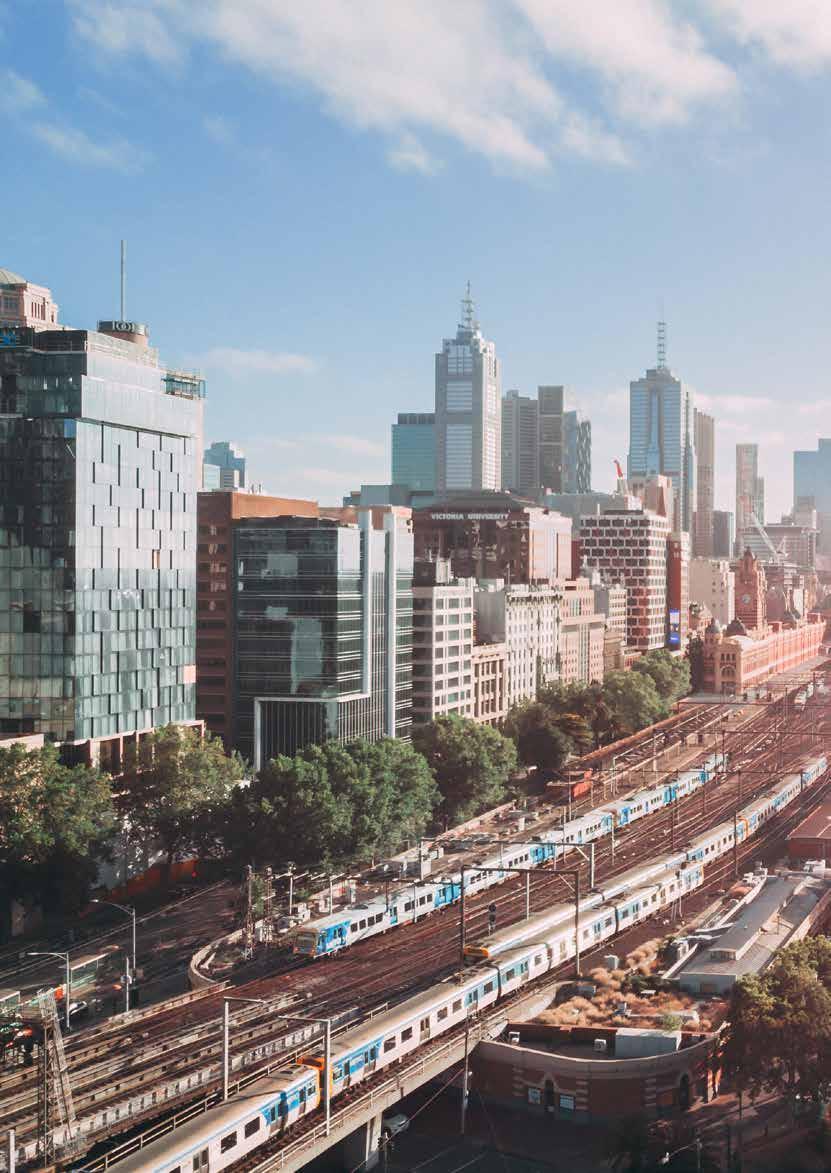
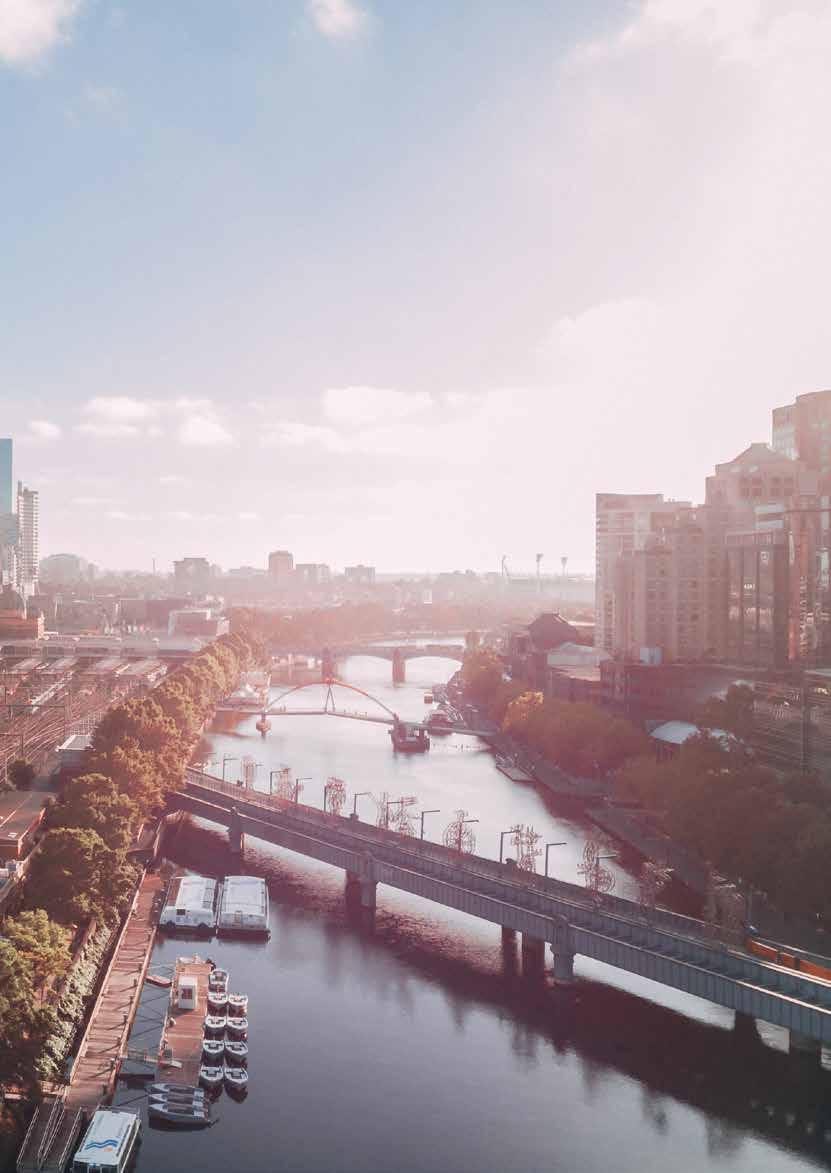
RESULTS OF THE XI LITERARY FESTIVAL OPEN EURASIAN LITERARY FESTIVAL & BOOK FORUM (OEBF-2022) IX - OPEN EURASIAN BOOK FORUM & LITERATURE FESTIVAL
OEBF FESTIVAL
From December 10 to 16 in Melbourne, Australia, the XI International Literary Festival “Open Eurasian Book Forum & Literature Festival” was held.

The Open Eurasian Literature Festival & Book Forum (OEBF), organised by the Eurasian Creative Guild (London) together with the British publishing house Hertfordshire Press, has become a meeting place for writers, poets, artists and other representatives of the arts for the eleventh time, but this year cinema and literature united.
The Open Eurasian Book Forum & Literary Festival was attended by creative people from around the world, including Israel, Australia, Bulgaria, Ukraine, Uzbekistan, Great Britain, Russia, Moldova, USA, Kazakhstan, Kyrgyzstan, France, Belarus, Spain, Turkey, and China.
The official opening of the festival began with the opening speech of the Vice-Chairman of the Guild, Marat Akhmedjhanov, and the premiere of the play by the Australian producer Warren Wills based on the book of the famous Kazakh playwright Dulat Issabekov, “Borte: Empress of the World”
The play portrays the difficult life of the wife of the “universal ruler of Mongolia” Genghis Khan, Borte. The guests of the festival had the opportunity to plunge into the atmosphere of that time, to feel the relationship between the two most powerful people of the greatest empire in the world since the time of Rome.
The opening was enchanting, the event was attended by more than 100 people, the event was attended by the Honorary Consul of Kazakhstan in
OCA MAGAZINE 60
Australia, Andrew Fernyhough, the Consul of India, Mongolia, representatives of the press, cinema and the literary community of Melbourne.

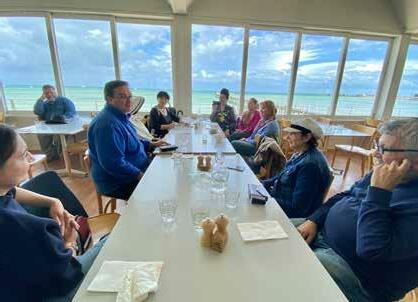
On Saturday, December 10, the literary marathon, “Voices of Eurasia’,’ was held in online and offline format. Talented authors from different parts of the world were presented, including: Natalie Mitz, Alexander Kazarnovsky, Lara Prodan, Lyudmila Larkina, Marina Shkrobova - Vernalis, Baqyt Bek Qadyr, Cathie Cayros, Elena Aslanyan, Aldona Grupas, Alex Levin - Arlev, Alisa Klima, Anna Demina, Vera Sytnik, Dana Zheteyeva, Elena Bezrukova, Elena Soboleva, Yesenzhan Abubakirov, Zhyldyz Urmanbetova, Karybek Baibosunov, Kati Beyaz, Ksyusha Zero, Lenar Shaeh, Liya Sizova, Lyubov Kazaziants, Lyubov Mosley, Mar. Salim, Marina Alyasova, Marina Vardan, Maria Zhumagulova, Maria Muchinskaya, Natalie Wong, Nina Yagolnitser, Nurgul Moldabaykyzy, Olga Sivey, Yulia Olshevskaya-Hatzenböller and Nurym Taibek

On December 11, there were presentations of books by the writer and poetess Victoria Levin and Alexander Kazarnovsky, winner of the Hertfordshire Press Award literary award in the Bestseller nomination of the Hertfordshire Press publishing house. As well as getting acquainted with Hertfordshire Press’ new publications and the works of the winners of the 9-10th international competition “Open Eurasia-2020-2021”:
1. “Сундук Безумного Кукольника” by Nina Yagolnitser
2. “War will tell the further plan” by Alexander Kazarnovskiy
3. “Turmoil” by Dulat Isabekov
4. “Leah and Ayh the sewing doll” by Nargisa Karasartova
5. “Соседушки” and “Сказки бабушки Гульсифат” by Gulsifat Shakhidi
6. “In the loyal eyes of a friend” by Andrey Grodzinskiy
7. “West Midlands Ho!” by Aldona Grupas
WWW.OCAMAGAZINE.COM 61
OEBF FESTIVAL
It should be noted that the book of the outstanding Lithuanian writer, Aldona Grupas, was presented and donated to the Lithuanian Cultural Centre in Melbourne, Australia.
On December 12, at the Bath restaurant on the shores of the Southern Ocean, the city of Sorrento, Mornington County, Victoria, the award ceremony for the winners of the Open Eurasia competition was held.
Grand Prix - Award from Hertfordshire Press.
The top ten in the category “prose” were:
Elena Soboleva (Russia) - 1st place
Marina Alyasova (Kazakhstan) - 2nd place
Olga Sivey (Russia) – 3rd place
Julia Olshevskaya-Hatzenböller (Germany) –3rd place
Alisa Klima (Russia)
Cathie Cayros (France)
Valery Yuabov (USA)
Viktor Uskov (Russia)
Nina Kim (Belgium)
Saule Abdramanova (Kazakhstan)
Maria Shevel award for the best work for children. Prize: $5,000*
Natalie Mitz (Australia) - 1st place
Ksyusha Nol (Turkey) - 2nd place
Nina Yagolnitser (Israel) - 3rd place
Lyubov Pivnik (Great Britain) – 3rd place
Saltanat Rakhimbekova award for the best work in the nomination “Academy” Prize: $3500*
Nurgul Moldabaykyzy (Kazakhstan) - 1st place
Anna Demina (Spain) - 1st place
Zhyldyz Urmanbetova (Kyrgyzstan) - 2nd place
Nurali Nurzod (Tajikistan) - 3rd place
Igor Savitsky Award for the best work in the nomination “Art-book” Prize: Grant $3500*
Marina Vernalis (Russia) - 1st place
Maria Zhumagulova (Kazakhstan) - 1st place
Vladimir Schastny award for the best work in the nomination “Heritage” Prize: Grant $3500*
Lenar Shaeh (Russia) - 1st place
Aldona Groupas (Great Britain) - 2nd place
Ludmila Larkina (Australia) - 2nd place
Darien Roitman (Israel) - 3rd place
Raykhan Imahanbet (Kazakhstan) - 3rd place
Kazat Akmatov award for the best work in the category “Small Prose” Prize: Grant $3,000*
Golden ten in the category “Small prose”:
Alexander Kazarnovsky (Israel) - 1st place
Baqyt Bek Qadyr (Kazakhstan) - 2nd place
Lara Prodan (USA) - 2nd place
Elena Bezrukova (Kazakhstan) - 3rd place
Natalie Wong (Bulgaria) - 3rd place
Kati Beyaz (Great Britain)
Love Mosley (USA)
Vera Sytnik (China)
Anastasia Kuzmicheva (Belarus)
Lyubov Kazaziants (Israel)
Jonathan Fryer award for the best work in the category “Publicism” Prize: $1,000*
Bubuira Bektenova (Kyrgyzstan) - 1st place
Umutai Eralieva (Kyrgyzstan) - 2nd place
Dina Mustakova (Kazakhstan) - 3rd place
Aya Maksutova award for the best work in the category “Translation” Prize: $1000*
Karybek Baysunov (Kyrgyzstan) - 1st place
Dana Zheteeva (Kazakhstan) - 2nd place
Yesenzhan Abubakirov (Kyrgyzstan) - 3rd place
Anatoly Lobov (Georgia) - 3rd place
OCA MAGAZINE 62
Marziya Zakiryanova award “Best female author”.
Alisa Klima (Uzbekistan) 1st place
Kati Beyaz (Great Britain) 2nd place
Vera Sytnik (Russia) 3rd place
Cathie Cayros (France) 3rd place
Award Egor Panshin for the best work in the category “Satire” Prize: $500*
Leah Sizova (Great Britain) - 1st place
Mar. Salim (Russia) - 2nd place
Marina Vardan (USA) - 2nd place
Alex Levin (USA) - 3rd place
Maria Muchinskaya (Belarus) – 3rd place
Award Bolot Shamshiyev for the best work in the category “Dramaturgy” Prize: $500*
Inana (Armenia) - 1st place
Alexander Kazarnovsky (Israel) - 2nd place
Olga Shpakovich (Russia) - 2nd place
Maxim Isaev (Belarus) - 3rd place
Category “Review”
Anatoly Lobov (Georgia) - 1st place
Inana (Armenia) - 2nd place
Raisa Melnikova (Lithuania) - 2nd place
Vita Balyabas (Ukraine) - 3rd place
Additional awards were medals from London Poezja. Barbara Yurkovskaya-Navrotskaya. Medals were awarded to Oksana Zhukova, Victoria Levina, Alexander Kazarnovsky
On December 13, the film “The Road to the Peak” (the best documentary of the III ECG Film Festival - 2021) was shown, directed by Oksana Zhukova and Oleg Drevnitsky. The film was shown as part of the presentation of the Arkady Bezrukov Prize.


Within the framework of the festival, zoom conferences were held under the guidance of festival director Anna Lari:
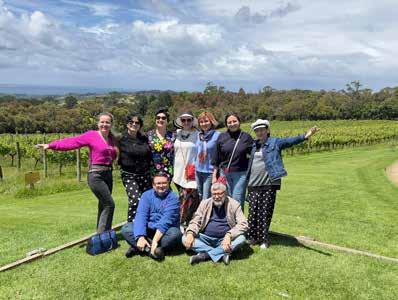
WWW.OCAMAGAZINE.COM 63
OEBF FESTIVAL
presented the collection Thread - 6, dedicated to Elizabeth II.

OEBF is the only literary festival in the world that since 2012 has been promoting the literature of the Eurasian region at the international level. The festival provides an opportunity for authors to talk about their work, exchange experiences and find like-minded people from around the world to implement joint projects.
Acceptance of applications for the 12th literary competition “Open Eurasia -2023” starts on March 1, 2023
December 13 saw an online master class on developing your personal brand from ECG Executive Director, Taina Kaunis
December 14, the conference from the Expert Council of the guild for business coaching was held titled: The Secret of Psychology “STARS”. The moderator was Elena Bezrukova. Shared their secrets: Andrei Grodzinsky, Daien Shaul Roitman, Anastasia Kuzmicheva, Lyudmila Dubkovetskaya, Marlan Nysynbaev, Natalia Makhno.
A conference from the Expert Council of the Translation: Translation bridge to the wonderful world of poetry was also held. Moderator: Elena Bosler, speakers: Alina Moseykina, Victoria Levina, Jonathan Campion, Maria Muchinskaya.
The final conference was held from the Expert Council of the Guild of Fiction on December 16th.
Speakers: Elena Aslanyan, Lenar Shaeh, Anna Gogoleva, Cathie Сayros. The book manager of Hertfordshire Press publishing house Anna Nikolaeva
Eurasian Creative Guild (London) is a non-profit public organisation founded in 2015 in London in order to unite and promote cultural and art figures of the Eurasian region in the English-speaking space. The main activity of ECG (London) is the organisation and holding of festivals in different countries of the world, literary and creative competitions, conferences and other events, within which creative people have the opportunity to discuss new projects, present their work, as well as get acquainted with the work of colleagues and get the opportunity to go international.
“Open Eurasian Book Forum & Literary Festival” is a unique event that aims to popularise literature in Eurasia and promote national authors abroad. It is designed to unite writers from all over the world and provide information support to national literary creativity.
Contacts: Анна Лари / Anna Lari
lari@ocamagazine.com Instant messengers (WhatsApp) +44 7903 837823
OCA MAGAZINE 64

EURASIAN FASHION AWARDS 2022



The fashion industry is often a barometer of economic and social fortunes - the expression ‘Cutting your coat to suit your cloth’ (i.e. living within your means) is a reflection of this and in recent history, hem lines have risen and clothes made more fitting during economic hardships. The colours and hues also tend to become muted and austere to suit ‘austerity’. However, when I was invited to the Eurasian Fashion Awards, as Chairman of the Eurasian Creative Guild I was more than surprised. Today’s Central Asian fashion Industry is undergoing a renaissance and there was no sign of financial woes in the flowing silks, velvets and brocades used in many of the collections on show in Kazakhstan’s third city - Shymkent. Gold and silver silver threads, jewelled accessories bedazzled and sparkled in the spotlights of the Rixos Hotel grand ballroom, and the striking oriental looks of the models paired seamlessly with the clothes on show.
This is the first time the awards have been held in Shymkent organised by the Turan Model Agency under the direction of Eurasian Creative Guild member, Saule Su-
leimen. An energetic children’s section started the proceedings, with models from Taraz and other cities in Kazakhstan.
The participating designers were from across Kazakhstan and further afield from countries such as Kyrgyzstan and Tajikistan. As the models walked the catwalk it was as though we were walking the old Silk Road itself. From Ancient Persia the profiles were Arabic, traditional head coverings accented with colourful embroidered geometry, modern portrait prints gave nod to pop art but are panelled into loose fitting kimonos, The Fashion Theatre Silhouettes collection was a jungle of animal prints and faux leather, topped with stylish cowboy hats.
Hats were a big thing in many collections allowing the models to play to the cameras while stroking the broad rims or giving extra height to already towering traditional Kazakh head wear with ostrich feathers and more crystal embellishments.
OCA MAGAZINE 66
FASHION
Another key feature of the festival was the use of traditional motifs. There were striking black and white printed patterns of Petroglyphs, hand painted trees of life, the paisley made its mark in a subtle way but it was the hand embroidered collections from Tajikistan that created an audible gasp among the audience.

Khurshed Sattorov’s kaleidoscopic collection of flowing gowns used hand embroidered and sewn fabrics harking back to the traditional patterns of Tajikistan and Dushanbe in particular. As his models glided along the catwalk, with traditional headwear and jewellery, they raised their arms letting oversized kimono sleeves open like great glowing butterflies. It was a grey December day in Shymkent but in the opulence of the room, the sun came out and the colours dazzled. We were all transformed back to the Arabian Nights and Persian princesses.
Another collection, also from Uzbekistan, by Firuza Yakubova, also used handmade embroidered pieces. The

collection is a family affair with sisters and mother all helping to maintain the historic traditions. For this collection, Firuza uses the patterns as highlights, sleeves, collars and hems accentuate the modern silhouettes created by the clothes. This is the Silk Road of the future - a fusion of cultural tradition bridging time and place. Spending time with this group of creative talents, without a common spoken language, made me realise how creativity can transcend differences, create laughter and act as a positive inspiring future - as well as producing quality fashion too!
Gareth Stamp Chairman of the Eurasian Creative Guild (London)
WWW.OCAMAGAZINE.COM 67
book of the year
HERTFORDSHIRE PRESS
KAРА Автор Султан Раев (2015), РУССКИЙ / RUSSIAN
ISBN: 978-1910886137

RRP: £24.50
RAISA, WHAT HURTS MY HEART... ENG, ISBN: 978-1-913356-54-5
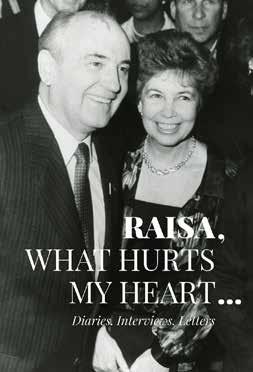

RRP: £24.95
WAR WILL TELL THE FURTHER PLAN by Alexander Kazarnovsky
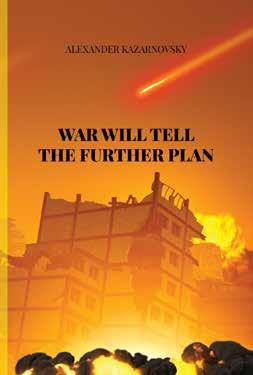
ENG, ISBN: 978-1-913356-49-1
RRP: £14.95
IN THE LOYAL EYES OF A FRIEND Andrey Grodzinskiy ENG, ISBN: 978-1913356507
RRP: £14.95,
OCA MAGAZINE 68
CATALOGUE
best female AUTHOR
THE LAND DRENCHED IN TEARS
 by Söyüngül Chanisheff
by Söyüngül Chanisheff
ENGLISH, PAPERBACK
ISBN: 978-1910886380 RRP:£24.50
A POETIC TREASURY FROM BELARUS: A celebration of the life and work of Vera Rich
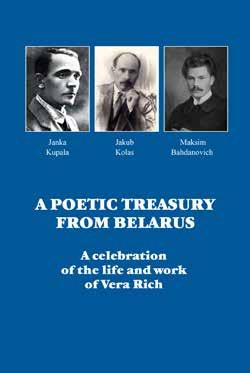
ISBN: 978-1913356040
RRP: £14.95
FARKHOD FROM NAVGHILEM
 by Gulsifat Shakhidi
by Gulsifat Shakhidi
ISBN: 978-1913356361
RRP: £17.50
PROJECTIVE GRAPHICS
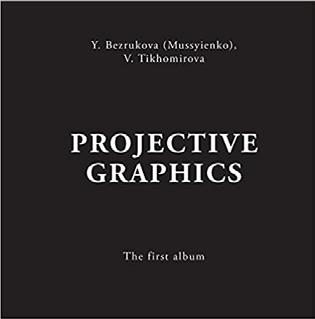 by Yelena Bezrukova
by Yelena Bezrukova
ISBN: 978-0993044434
RRP: £12.95
WWW.OCAMAGAZINE.COM 69
POETRYHERTFORDSHIRE PRESS
“THE WORLD DISSOLVES LIKE A DREAM” by
Leyla Aliyeva,
2018, ENG, HARDBACK
ISBN: 978-1-910886-76-2 RRP: £14.95
QUEEN KURMANJAN OF THE MOUNTAINS by Bubaisha Arstynbekova, HARDBACK, ENG

ISBN: 9781910886472 RRP:£24.95
MAESTRO AND MUSE
Sergey Bely, Hardcover ENG | 2021

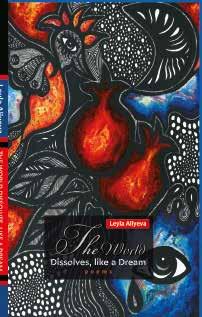
ISBN: 978-1-913356-39-2 RRP:£19.95
ПОЭЗИЯ В ЖИВОПИСИ Марина Шкробова – Верналис, paperback, RUSS
ISBN:978-1-913356-53-8 RRP:£17.50

OCA MAGAZINE 70
ACADEMY
S.S KUNANBAYEVA
CONCEPTUALLY-GROUNDED COGNITIVE-LINGUAL BASICS OF FORMING A MULTILINGUAL
ISBN: 978-1910886991
RRP: £14.95
ORAZALY SABDEN
ABAI, FUTURE OF KAZAKHSTAN AND WORLD CIVILISATION

ISBN: 978-1910886786
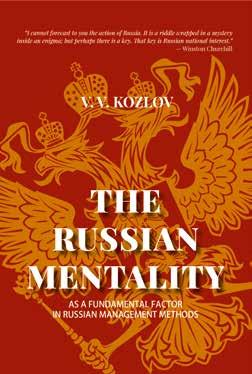
RRP: £17.50
TLEKTES YESPOLOV
THE KAZAKH MODEL FOR A RESEARCH UNIVERSITY

ISBN: 978-1-913356-46-0
RRP: £24.95
V.V KOZLOV
THE RUSSIAN MENTALITY
ISBN: 978-1-913356-46-0
RRP: £17.50
WWW.OCAMAGAZINE.COM 71
historyHERTFORDSHIRE PRESS
VANISHED KHANS AND EMPTY STEPPES
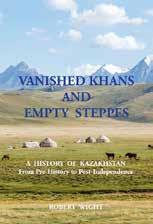 by Robert Wight (2014)
by Robert Wight (2014)
The book opens with an outline of the history of Almaty, from its nineteenth-century origins as a remote outpost of the Russian empire, up to its present status as the thriving second city of modern-day Kazakhstan. The story then goes back to the Neolithic and early Bronze Ages, and the sensational discovery of the famous Golden Man of the Scythian empire. The transition has been difficult and tumultuous for millions of people, but Vanished Khans and Empty Steppes illustrates how Kazakhstan has emerged as one of the world’s most successful post-communist countries.
HARD BACK ISBN: 978-0-9930444-0-3 RRP: £24.95
PAPERBACK ISBSN: 978-1-910886-05-2 RRP: £14.50
KANYBEK IMANALIEV THE KAGANATE
Overall, The Kaganate is a remarkably skilful and fabulously imaginative prose poetry collection, which explores the overwhelming need for young men to be destructive, the overtly pagan sensibilities of the authors native Kyrgyzstan, along with those disciplines required by adolescent boys to channel instinctive animosities away from their parents into the rigours necessary to become worthy young warriors in such a way that his volume proves virtually obsessive. After all, each one of these observations evokes a subtle type of “second puberty” occurring between older men assaying values above mere materialism, sexuality, and having children - in order to focus on shared spiritual concerns.

ISBN: 978-1910886960
HB RRP:£19.95
VLADIMIR TULINOV THE GUARDSMEN OF HIPPOCRATES
No people suffered more during the Second World War than the people of the Soviet Union and the soldiers of the Red Army. Tens of millions perished and further millions were wounded – horrific numbers, which would have been even higher if it weren’t for the efforts of the army of doctors, nurses, and medics who treated the wounded and the suffering. V.M. Tulinov’s The Guardsmen of Hippocrates brings the reader up close to the men and women who fought to save the lives of those struggling to resist the Nazi invasion.
ISBN: 978-1910886946
HB, RRP: £19.95
WEST MIDLANDS HO!
by Aldona Grupas
West Midlands Ho! is a compelling work of local history, focused on a particular corner of England but set against a background of tumultuous international events.In the book, Lithuanian author Aldona Grupas reveals the personal tales of Lithuanian migrants who moved to Britain in the wake of World War II. Unable to return to their homeland due to the Soviet occupation, from 1947 onwards, several thousand refugees swapped the refugee camps of Allied-occupied Germany for basic accommodation in Britain, along with jobs in manufacturing and agriculture. In the following decades, they put down roots in Britain, all the while keeping their Lithuanian identity alive. In a series of interviews, Grupas teases out the personal experiences of five members of this migrant community in the West Midlands of England.

PAPERBACK ISBN: 978-1913356231 RRP:£19.95

OCA MAGAZINE 72
THE PLIGHT OF A POSTMODERN HUNTER
Chlngiz Aitmatov Mukhtar Shakhanov (2015)
ISBN: 978-1-910886-11-3


RRP: £24.95 ENG HARDBACK
“SHORT STORIES FROM AZERBAIJAN” 2018
ISBN: 978-1-910886-72-4
RRP: £19.95 ENG HARDBACK
GOETHE AND ABAI
by Herold Belger
ISBN: 9781910886168 Hardcover EN|2015

£19.95

TURMOIL
by Dulat Issabekov
ISBN: 978-1913356569 Paperback


RRP: £14.95

WWW.OCAMAGAZINE.COM 73
classicS
DISCOVERY GUIDES & TRAVEL COMPANIONS
100 EXPERIENCES OF KYRGYZSTAN by Ian Claytor
ENG
ISBN: 978-0957480742
RRP: £9.50
101 Zážitok Z Kazachstanu
Editori: Nick Rowan a Roman Vassilenko
ISBN: 9781913356255
RRP: £9.50
100 EXPERIENCES OF MODERN KAZAKHSTAN by Vitaly Shuptar, Nick Rowan and Dagmar Schreiber


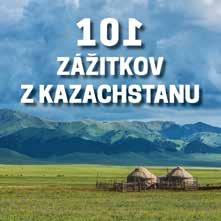
ENG
ISBN: 978-1-910886-15-1
RRP: £9.50
THE TASTE OF CENTRAL ASIA COOK BOOK by Danny Gordon
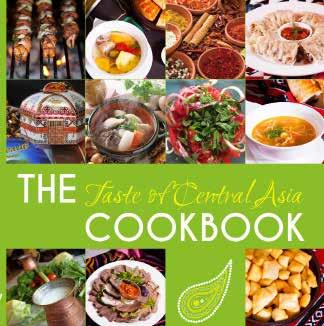
ENG
ISBN:978-1-910886-09-0
RRP: £9.50
DISCOVERY KYRGYZSTAN travel guide by Ian Claytor ENG, DE, FR, RUS, JAP

ISBN: 9780955754920
RRP: £5.95
DISCOVERY UZBEKISTAN travel guide by Andrea Leuenberger ENG, DE, FR, RUS, JAP

ISBN: 9780957480704
RRP: £5.95
DISCOVERY KAZAKHSTAN travel guide by Vitaly Shuptar and Dagmar Schreiber

ENG, DE
ISBN: 9780955754937
RRP: £5.95
DISCOVERY TAJIKISTAN Travel Guide by Vitaly Shuptar

ENG
ISBN: 978-09557549-6-8
RRP: £5.95
OCA MAGAZINE 74 HERTFORDSHIRE PRESS
FRIENDLY STEPPES. A SILK ROAD JOURNEY
by Nick Rowan (2012)
This is the chronicle of an extraordinary adventure that led Nick Rowan to some of the world’s most incredible and hidden places.
HARD BACK ISBN: 978-0-9927873-4-9
PAPERBACK ISBN: 978-0-9557549-4-4
TRAVELOGUES
THE SILK ROAD REVISITED
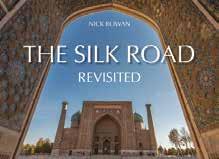
 by Nick Rowan (2020)
by Nick Rowan (2020)
Take a trip along this remarkable historic trading route that once ran from Venice, through the Mediterranean, across Turkey and Iran, through the Caucasus and Caspian Sea, onwards via Central Asia and finally to China.
HARDBACK
RRP: £34.99
ISBN: 978-1-913356-07-1
ALPHABET GAME
 by Paul Wilson (2014)
by Paul Wilson (2014)
Travelling around the world may appear as easy as ABC, but looks can be deceptive: there is no ‘X’ for a start. Not since Xidakistan was struck from the map. Yet post 9/11, with the War on Terror going global, could ‘The Valley’ be about to regain its place on the political stage? Xidakistan’s fate is inextricably linked with that of Graham Ruff, founder of Ruff Guides. Setting sail where Around the World in Eighty Days and Lost Horizon weighed anchor, our not-quite-a-hero suffers all in pursuit of his golden triangle: The Game, The Guidebook, The Girl. With the future of printed Guidebooks increasingly in question, As Evelyn Waugh’s Scoop did for Foreign Correspondents the world over, so this novel lifts the lid on Travel Writers for good.
PAPREBACK ENG ISBN: 978-0-992787325 RRP: £14.50
MEET THE ‘STANS
 by Christopher Jones
by Christopher Jones
“If you want to travel in peace, you must howl like the wolves among whom you find yourself,” a 19th century French explorer advised on entering Central Asia. Which was simply the Central Asian version of raising your negroni and slurring ‘When in Rome’. Thankfully, the author discovered, the negroni’s had since made their way to Central Asia, or at least Almaty, as part of the somewhat inconsiderable encroachment made by the modern world.
HARDBACK
ISBN: 978-1-913356-15-6
RRP: £17.50
DOES IT YURT?
(2016)
Conjuring images of nomadic horsemen, spectacular monuments, breathtaking scenery and crippling poverty, Central Asia remains an enigma. Home to the descendants of Jenghiz Khan’s Great Horde, in the nineteenth century the once powerful Silk Road states became a pawn in the ‘Great Game’ of expansion and espionage between Britain and Russia, disappearing behind what would become known as the ‘Iron Curtain’. With the collapse of the USSR, the nations of Kazakhstan, Kyrgyzstan, Tajikistan, Turkmenistan and Uzbekistan were born. Since independence, Central Asia has seen one civil war, two revolutions and seven dictators.
LANGUAGE ENG PAPER BACK RRP:14.95
ISBN: 978-1-910886-29-8
WWW.OCAMAGAZINE.COM 75
by Stephen M. Bland
children award winning
RHYMES ABOUT BOYS by Lyudmila Dubkovetcaia (2019)
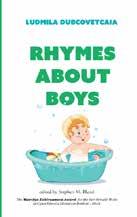
HARD BACK ENGLISH
ISBN: 978-1-913356-03-3

RRP: £17.50
СОФЬИНЫ НЕБЕСА, ИЛИ ВОЛШЕБНЫЙ ДАР ГНОМОВ Оксана Гордийко (2019)
ISBN: 978-1-910886-97-7 RRP: £14.50

LEIA THE LITTLE MOUSE by Arina Chunaeva (2019)

HARDBACK ENGLISH
ISBN: 978-1-913356-01-9
RRP: £22.50
MENIK THE MAMMOUTH by OGDO (2017)

PAPERBACK ENG
ISBN: 978-1-910886-62-5
RRP: £12.50
TALES OF GRANDMA GULSIFAT by Gulsifat
Shakhidi
HARD BACK ENGLISH
ISBN:978-1-910886-90-8 RRP: £22.50
Дневник Ёжика - путешественника, или Где живёт счастье? by Надежда Серебренникова

ISBN: 9781913356095
Paperback RU| 2020 £19.50
ELISH AND THE WICKER TALE by Timur Akhmedjanov
ISBN: 9781913356194
Paperback ENG | 2020 £9.99
ELISH AND THE WICKER TALES by

 Kamran Salayev
Kamran Salayev
PAPERBACK SQUARE ENG
ISBN: 978-1-910886-88-5
RRP:£12.50
OCA MAGAZINE 76
HERTFORDSHIRE PRESS
THE GOAT THAT WANTED TO TRAVEL
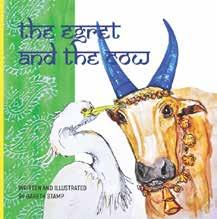

ISBN: 978-1913356170
RRP: £9.99
ISBN: 978-1913356149
RRP: £9.99
Leah and Aya the Sewing Doll
JUNIOR
DANIEL AKHMED THE FINAL comic
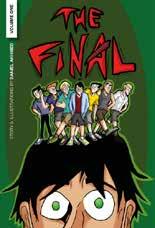

ISBN: 978-1-913356-18-7
RRP: £14.50
LEAH AND AYA THE SEWING DOLL NARGISA KARASARTOVA
ISBN: 978-1913356453
RRP: £17.50
Mikhail Kunitskiy
PAPERBACK ENG
ISBN: 978-1-913356-60-6 RRP: £24.95
AYSU
CARDBOARD
ISBN: 978-1-910886-24-3 RRP: £10.00
HUNTING DOGS

FARKHAT TAMENDAROV
ISBN: 978-1913356354

RRP: £17.50
POOL OF STARS
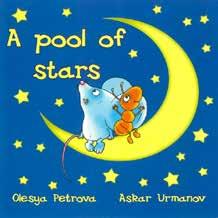
by Olesya Petrova (2007)
PAPERBACK ENG / RUS
ISBN: 978-0955754906 RRP: £4.95
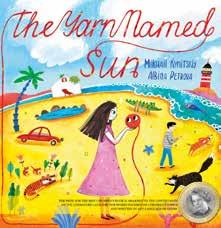
WWW.OCAMAGAZINE.COM 77
AND THE MAGIC BAG
by Maide Akan (2016)
THE EGRET AND THE COW by Gareth Stamp
THE YARN NAMES SUN
The book “Leah and Aya the Sewing Doll,” by the author Nargisa Karasartova, is intended for children of preschool and primary school age. This book contains fairy tales that can be beloved by any child, tales that are distinguished not only by their fascinating plots, but also because they teach kindness, friendship, and justice. Many heroes of these fairy tales are usually mistaken or misunderstood, but eventually learn to love and accept themselves as they are. The stories teach valuable lessons, they show that our world is responsive and that any misunderstanding can be corrected, the heroes know how to ask for forgiveness and how to forgive. These fairy tales show that a happy ending depends on each of us, that we ourselves must have a good heart, inner strength and are open to the world around us. Karasartova Nargisa was born on August 29, 1978. She is a poet, writer, translator and English teacher in Bishkek city. She writes poetry for children and adults, as well as fairy tales for a variety of ages. She’s published two collections of poems: “Diamonds in the Snow” and “Little Dreamers”. In 2012 she became a laureate of two competitions, the “Golden Stool”, with a nomination for the “Best Tales for Children” (Bishkek) and as well as the“White Tablet”, with a nomination for “Small Prose” (Moscow). She was also diplomate of the Kyrgyz contest «Heroes invite their Friends”. Among other Fairy Tales by Nargisa Karasartova
HERTFORDSHIRE PRESS Leah and Aya the Sewing Doll by Nargisa Karasartova RRP: £17.50 www.hertfordshirepress.com Nargisa Karasartova Leah and Aya the Sewing Doll
CONTENTS
OPENING A NEW CHAPTER OF PARTNERSHIP AND UNDERSTANDING FOR KAZAKHSTAN
UZBEKISTAN’S NEW REGIONAL POLICIES AND REFORMS


SUPPORTING KAZAKHSTAN’S ‘GREEN TRANSFORMATION’
KAZAKHSTAN: REFLECTIONS AFTER THE ELECTIONS
FROM THE FRONT LINE: THE UKRAINE CONFLICT INTERVIEW WITH DANIEL SPECKHARD, CEO CORUS GROUP


TELECOMMUNICATION NETWORKS AS AN INTEGRAL LINK OF THE DIGITAL ECONOMY IN THE KYRGYZ REPUBLIC

THE TURKIC WORLD: A CONCEPT OF CO-OPERATION
BETWEEN CENTRAL ASIAN COUNTRIES
ROTARY FOUNTAINS IN THE HEART OF EURASIA
CONTRIBUTORS DISCLAIMER
DISCOVERING TASHKENT - UZBEKISTAN TRAVEL
THE EVOLUTION OF BOROVOE VILLAGE
CREATIVE & SUSTAINABLE HOW TO CREATE THE CREATIVE CLUSTER INTO THE NATIONAL PARK
THE KEY TO PARADISE – LOVE TO LIFE AND PEOPLE
TORGYN JOLDASBEKKYZY
PRESTIGIOUS INTERNATIONAL BOOK AWARD ANNOUNCES 2022 WINNERS IN LONDON
LONDON HOSTS CENTRAL ASIAN FOLK FESTIVAL
RESULTS OF THE XI LITERARY FESTIVAL OPEN EURASIAN LITERARY FESTIVAL & BOOK FORUM (OEBF-2022)
EURASIAN FASHION AWARDS 2022
1. All articles/interviews submitted, regardless of the way they were submitted (by the author, approached by members of our OCA editorial team or otherwise), are subject to the Editor-in-Chief’s and/or publisher’s approval at their sole discretion. Without such approval the article may only be published online, or may not be published at all.
2. Only articles/interviews submitted according to the “Contributors Guidelines” published on ocamagazine.com (such as articles being in the English language, on suitable and relevant subject, copyrights, number of words) will be sent to the Editor-in-Chief and/or publisher for approval.
3. Priority is given to ECG members, advertorial and commissioned submissions, however, priority does not guarantee that the articles will be published in print or online.
4. Editorial team members and/or the Editor-in-chief and/or publisher shall not be required to any explanation as to why articles have not been approved.
5. Articles approved by the Editor-in-Chief and/or publisher will not be sent to contributors for print/design/layout/text approval unless agreed in advance in writing.
6. The Editor-in Chief and/or publisher may decide to allow certain approved articles to be published only online only as we are limited in the number of pages (For hard copy publication) and financial ability.
7. Contributors may obtain one free printed copy (unless agreed in an advertorial contract) at our meetings in London or alternatively magazines can be sent by post at extra charge (P&P international rates apply).
3 ISSUES PER YEAR
Please
Name Surname

Company
Address Country Phone
E-mail
Number of Copies
Cost of Subscription
£95 (worldwide delivery)
£45 (delivery in UK mainland)
£75 (delivery in EU countries)
Total Signature Date
Silk Road media and partners have offers and information that we may send you by email or post. We don’t want you to miss out, but if you would prefer not to hear from us please tick there
SUBSCRIPTION FORM
cheque
Road
street,
pay by PayPal write to: manager@discovery-bookshop.com or visit www.ocamagazine.com
send form with
payable to: Silk
Media, Suite 125, 43 Bedford
London WC2E 9HA. UK To
THE MYSTERY OF ‘TARTAR ISLAND’ 6 10 14 16 20 22 24 28 32 36 40 44 46 50 52 56 59 66 DISCOVERING KARAKALPAKSTAN
ECGEURASIAN FILMFESTIVAL
APPLICATIONS FOR THE 5TH ECG EURASIAN FILM FESTIVAL ARE BEING ACCEPTED
CONTACTS: INFO@EURASIANFILMFESTIVAL.UK / WHATSAPP +447411978955
25-31 MAY 2023 LONDON
WWW. EURASIANFILMFESTIVAL.UK
APPLY FOR 2023 SEASON

DEADLINE 1 JUNE 2023


The Burabay International Film Festival is a special project that collects short films of various genres that reflect the social aspects of life. The Burabay Film Festival is connected with the “Voices of Friends: Poetry and Art” festival, which brings together many talented people and connoisseurs who will also be able to appreciate your work. The festivals take place in a fabulously beautiful place - in the Burabay National Park, where a person can immerse himself in the culture of the Eurasian region.
The dates of the event fall on the period from 6 to 11 September, 2023.


For all questions, please, contact us:
burabay@gorizonti.com

Instagram: @eurasianfilmfest
Facebook: @ECGFilmFestival























































































 by Yuldosh Juraboev
by Yuldosh Juraboev




















 by Söyüngül Chanisheff
by Söyüngül Chanisheff

 by Gulsifat Shakhidi
by Gulsifat Shakhidi
 by Yelena Bezrukova
by Yelena Bezrukova







 by Robert Wight (2014)
by Robert Wight (2014)



















 by Nick Rowan (2020)
by Nick Rowan (2020)
 by Paul Wilson (2014)
by Paul Wilson (2014)
 by Christopher Jones
by Christopher Jones







 Kamran Salayev
Kamran Salayev














